START HERE » TCR Chain Finder
Select Size10-16.5 10-16.5 SkidSteer 10-17.5 10-22.5 10.00-15 10.00-15TR 10.00-16.5 10.00-20 10.00-22 10.25x3.25 10.5/80-18 10/10.5x2.75 10x3.50 11-17.5 11-22.5 11-24.5 11.00-15 11.00-15TR 11.00-16 11.00-20 11.00-22 11.2-16 11.2-20 11.2-24 11.2-28 11.2-32 11.2-34 11.2-36 11.2-38 11.2-44 11L-16 12-22.5 12-24.5 12.00-15 12.00-16.5 12.00-16.5 Skidsteer 12.00-20 12.00-24 12.25x3.50x6 12.4-16 12.4-20 12.4-24 12.4-28 12.4-36 12.4-38 12.4-40 12.4-42 12.5-20 12.5-22.5 12.5/80-18 12x12 12x3 12x3.50x6 13.00-24 13.00-25 13.50-16.1 13.6-16 13.6-24 13.6-26 13.6-28 13.6-36 13.6-38 13.9-36 13/80-20 13x4.00-6 13x5x6 13x6.50-6 14-17.5 14-17.5 Skidsteer 14.00-20 14.00-21 14.00-24 14.00-25 14.9-24 14.9-26 14.9-28 14.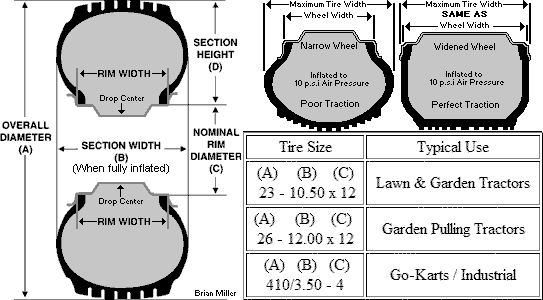 5 235/80-16 235/80-17 235/80-22.5 235/85-16 23x10-12 23x10.50-12 23x10x10 23x11-10 23x7.50x12 23x8-10 23x8-11 23x8.50-12 23x8.50-14 23x9.50x12 24.5-32 245/55-17 245/65-15 245/65-17 245/70-15 245/70-16 245/70-17 245/70-17.5 245/70-19.5 245/75-15 245/75-16 245/75-17 245/75-22.5 245/85-16 24x10.50-12 24x10x11 24x11-11 24x11.00-12 24x11.5x10 24x11x10 24x11x8 24x11x9 24x12-10 24x12-12 24x13x12 24x13x9 24x8-11 24x8.00-12 24x8.00-14 24x8.50-12 24x8.50-14 24x9.50-12 24x9x11 24x9x12 250-15 255/45-18 255/55-17 255/55-18 255/60-17 255/60-18 255/65-15 255/65-16 255/65-17 255/70-15 255/70-16 255/70-17 255/70-18 255/70-22.5 255/75-15 255/75-16 255/75-17 255/80-22.5 255/85-16 25x10-8 25x10x10 25x10x12 25x11x10 25x11x12 25x11x8 25x12x10 25x12x9 25x13-9 25x13.50-9 25x13.5x12 25x7.50-15 25x8-10 25x8-11 25x8.50-14 25x8x12 26.5-25 26.5-29 265/50-16 265/50-20 265/60-16 265/60-18 265/65-17 265/70-15 265/70-16 265/70-17 265/70-18 265/70-19.5 265/75-15 265/75-16 265/75-22.5 265/80-16 26x10-12 26x10-14 26x10.5x12 26x11-12 26x11-14 26x12-14 26x12. 5 235/80-16 235/80-17 235/80-22.5 235/85-16 23x10-12 23x10.50-12 23x10x10 23x11-10 23x7.50x12 23x8-10 23x8-11 23x8.50-12 23x8.50-14 23x9.50x12 24.5-32 245/55-17 245/65-15 245/65-17 245/70-15 245/70-16 245/70-17 245/70-17.5 245/70-19.5 245/75-15 245/75-16 245/75-17 245/75-22.5 245/85-16 24x10.50-12 24x10x11 24x11-11 24x11.00-12 24x11.5x10 24x11x10 24x11x8 24x11x9 24x12-10 24x12-12 24x13x12 24x13x9 24x8-11 24x8.00-12 24x8.00-14 24x8.50-12 24x8.50-14 24x9.50-12 24x9x11 24x9x12 250-15 255/45-18 255/55-17 255/55-18 255/60-17 255/60-18 255/65-15 255/65-16 255/65-17 255/70-15 255/70-16 255/70-17 255/70-18 255/70-22.5 255/75-15 255/75-16 255/75-17 255/80-22.5 255/85-16 25x10-8 25x10x10 25x10x12 25x11x10 25x11x12 25x11x8 25x12x10 25x12x9 25x13-9 25x13.50-9 25x13.5x12 25x7.50-15 25x8-10 25x8-11 25x8.50-14 25x8x12 26.5-25 26.5-29 265/50-16 265/50-20 265/60-16 265/60-18 265/65-17 265/70-15 265/70-16 265/70-17 265/70-18 265/70-19.5 265/75-15 265/75-16 265/75-22.5 265/80-16 26x10-12 26x10-14 26x10.5x12 26x11-12 26x11-14 26x12-14 26x12. 00-12 26x8-12 26x9-12 26x9-14 26x9.5-12 270/60-12 270/95-36 275/45-20 275/55-17 275/55-18 275/55-20 275/60-15 275/60-16 275/60-17 275/60-18 275/60-20 275/60HR17 275/65-16 275/65-17 275/65-18 275/70-16 275/70-17 275/70-18 275/70-22.5 275/80-22.5 275/80-24.5 27x10-14 27x10.50-15 27x10x12 27x11-12 27x11-14 27x12-14 27x12x12 27x8.50-14 27x8.50-15 27x9-12 27x9-14 27x9.50-15 28-Dec 28-Nov 285/45-19 285/50-20 285/60-16 285/60-17 285/60-18 285/65-17 285/65-18 285/70-16 285/70-17 285/70-19.5 285/75-16 285/75-24.5 28L-26 28l26 28x10-14 28x12-15 28x8.50x14 28x9-14 28x9-15 29.5-25 29.5-29 290/95-34 295/45-20 295/50-16 295/70-17 295/70-22.5 295/75-16 295/75-22.5 295/75-24.5 295/80-22.5 29x11-14 29x12-15 29x12.50-15 29x8-15 29x9-14 29x9.50-15 3.40/3.00X5 30.5L-32 300/70-20 305/45-17 305/50-15 305/50-20 305/55-20 305/60-18 305/70-16 305/70-17 305/70-22.5 305/75-24.5 305/85-16 305/85-22.5 30x10-14 30x9.50-15 30x9.50-16 315/45-22.5 315/70-15 315/70-17 315/70-22.5 315/75-15 315/75-16 315/75-22.5 315/75-24.
00-12 26x8-12 26x9-12 26x9-14 26x9.5-12 270/60-12 270/95-36 275/45-20 275/55-17 275/55-18 275/55-20 275/60-15 275/60-16 275/60-17 275/60-18 275/60-20 275/60HR17 275/65-16 275/65-17 275/65-18 275/70-16 275/70-17 275/70-18 275/70-22.5 275/80-22.5 275/80-24.5 27x10-14 27x10.50-15 27x10x12 27x11-12 27x11-14 27x12-14 27x12x12 27x8.50-14 27x8.50-15 27x9-12 27x9-14 27x9.50-15 28-Dec 28-Nov 285/45-19 285/50-20 285/60-16 285/60-17 285/60-18 285/65-17 285/65-18 285/70-16 285/70-17 285/70-19.5 285/75-16 285/75-24.5 28L-26 28l26 28x10-14 28x12-15 28x8.50x14 28x9-14 28x9-15 29.5-25 29.5-29 290/95-34 295/45-20 295/50-16 295/70-17 295/70-22.5 295/75-16 295/75-22.5 295/75-24.5 295/80-22.5 29x11-14 29x12-15 29x12.50-15 29x8-15 29x9-14 29x9.50-15 3.40/3.00X5 30.5L-32 300/70-20 305/45-17 305/50-15 305/50-20 305/55-20 305/60-18 305/70-16 305/70-17 305/70-22.5 305/75-24.5 305/85-16 305/85-22.5 30x10-14 30x9.50-15 30x9.50-16 315/45-22.5 315/70-15 315/70-17 315/70-22.5 315/75-15 315/75-16 315/75-22.5 315/75-24. 5 315/80-22.5 31x10.50-15 31x10.50-16.5 31x11.50-15 31x11.50-16 31x12.50-16 31x13.5-15 31x15.50-15 320/70-20 320/70-24 320/80-18 320/85-34 320/90-46 325/60-15 325/60-18 325/60-20 325/65-18 325/80-16 32x10-16 32x11.50-15 32x11.50-16 32x12.50-15 32x12.50-16.5 32x9-16 33x10.50x15 33x12.50-15 33x12.50-16.5 33x13.50-15 33x13.50-16 33x14.50-15 33x14x15 33x15.5-16.5 33x9.50-15 340/80-18 340/85-24 340/85-28 345/55-16 345/55-17 34x9.50-15 34x9x16 35.5-32 355/60-20 355/65-18 355/80-20 35x12.5-16 35x12.50-15 35x12.50-16.5 35x12.50-17 35x12.50-20 35x13.50-15 35x13.50-16 35x14-15 35x14-16 360/70-24 365/60-22.5 365/65-16 36x12.50-15 36x12.50-16.5 36x13x16 36x14-16.5 37x12.50-16.5 37x12.50-17 37x12.50-20 37x12.50x16 37x13.50-17 37x13.50-20 38.5x15-16.5 380/85-24 380/85-28 380/85-30 385/95R24 38x12.50x16.50 38x13x16 38x15.50R16.5 395/85-20 4.00x4.80x8 4.10/3.50x4 4.10/3.50x5 4.10/3.50x6 4.10x3.50x6 400/70-20 400/80-28 405/70-20 40x19-19.5 41x14.00-20 420/70-24 420/70-28 420/70-30 420/80-46 420/90-30 425/65-22.
5 315/80-22.5 31x10.50-15 31x10.50-16.5 31x11.50-15 31x11.50-16 31x12.50-16 31x13.5-15 31x15.50-15 320/70-20 320/70-24 320/80-18 320/85-34 320/90-46 325/60-15 325/60-18 325/60-20 325/65-18 325/80-16 32x10-16 32x11.50-15 32x11.50-16 32x12.50-15 32x12.50-16.5 32x9-16 33x10.50x15 33x12.50-15 33x12.50-16.5 33x13.50-15 33x13.50-16 33x14.50-15 33x14x15 33x15.5-16.5 33x9.50-15 340/80-18 340/85-24 340/85-28 345/55-16 345/55-17 34x9.50-15 34x9x16 35.5-32 355/60-20 355/65-18 355/80-20 35x12.5-16 35x12.50-15 35x12.50-16.5 35x12.50-17 35x12.50-20 35x13.50-15 35x13.50-16 35x14-15 35x14-16 360/70-24 365/60-22.5 365/65-16 36x12.50-15 36x12.50-16.5 36x13x16 36x14-16.5 37x12.50-16.5 37x12.50-17 37x12.50-20 37x12.50x16 37x13.50-17 37x13.50-20 38.5x15-16.5 380/85-24 380/85-28 380/85-30 385/95R24 38x12.50x16.50 38x13x16 38x15.50R16.5 395/85-20 4.00x4.80x8 4.10/3.50x4 4.10/3.50x5 4.10/3.50x6 4.10x3.50x6 400/70-20 400/80-28 405/70-20 40x19-19.5 41x14.00-20 420/70-24 420/70-28 420/70-30 420/80-46 420/90-30 425/65-22.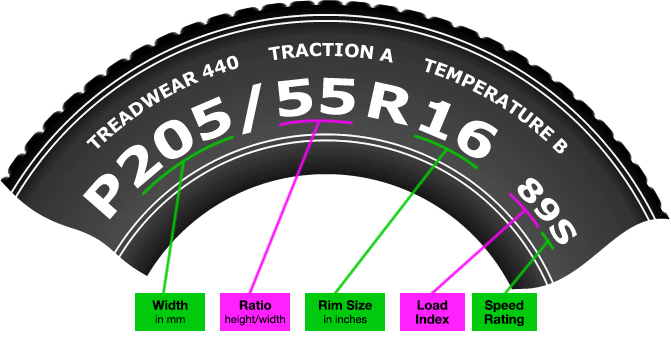 5 43/16.00x20 440/65-28 440/80-28 440/80-34 445/65-19.5 445/65-22.5 445/70-24 44x18.00-20 455/55R22.5 460/65-24 480/65-28 480/80-30 5.00/5.70x8 5.30/4.50x6 550/65-25 555/70-25 6.00-14 6.50-10 6.50-16 6.50-20 6.70-15 600/50-22.5 600/55-26.5 600/65-34 6x12 7-17.5 7.00-12 7.00-14 7.00-15 7.00-15TR 7.00-16 7.00-17 7.00-18 7.00-20 7.2-24 7.50-10 7.50-15 7.50-15TR 7.50-16 7.50-17 7.50-18 7.50-20 700/45-22.5 700/50-26.5 700/50-34 700/55-34 700/70-34 705/70-25 710/45-26.5 710/55-34 73/44.00-32 750/55-26.5 750/65-25 755/70-25 8-17.5 8-19.5 8-22.5 8.00-16.5 8.15x15 8.25-15 8.25-15TR 8.25-20 8.3-24 8.50-17.5 8.75-16.5 8x12 8x15 8x16 9-14.5MH 9-17.5 9-22.5 9.00-15 9.00-15TR 9.00-16 9.00-20 9.5-16 9.5-24 9.5-28 9.5-32 9.5-36 9.5-38 9.50-16.5 H70-14ST H78-14ST H78-15 H78-15ST L78-16 LR78-15 LR78-16 Nov-36 Nov-38 NR78-15 Oct-32 Oct-38 PR78-15 PR78-16 QR78-15 QR78-16 Skidsteer
5 43/16.00x20 440/65-28 440/80-28 440/80-34 445/65-19.5 445/65-22.5 445/70-24 44x18.00-20 455/55R22.5 460/65-24 480/65-28 480/80-30 5.00/5.70x8 5.30/4.50x6 550/65-25 555/70-25 6.00-14 6.50-10 6.50-16 6.50-20 6.70-15 600/50-22.5 600/55-26.5 600/65-34 6x12 7-17.5 7.00-12 7.00-14 7.00-15 7.00-15TR 7.00-16 7.00-17 7.00-18 7.00-20 7.2-24 7.50-10 7.50-15 7.50-15TR 7.50-16 7.50-17 7.50-18 7.50-20 700/45-22.5 700/50-26.5 700/50-34 700/55-34 700/70-34 705/70-25 710/45-26.5 710/55-34 73/44.00-32 750/55-26.5 750/65-25 755/70-25 8-17.5 8-19.5 8-22.5 8.00-16.5 8.15x15 8.25-15 8.25-15TR 8.25-20 8.3-24 8.50-17.5 8.75-16.5 8x12 8x15 8x16 9-14.5MH 9-17.5 9-22.5 9.00-15 9.00-15TR 9.00-16 9.00-20 9.5-16 9.5-24 9.5-28 9.5-32 9.5-36 9.5-38 9.50-16.5 H70-14ST H78-14ST H78-15 H78-15ST L78-16 LR78-15 LR78-16 Nov-36 Nov-38 NR78-15 Oct-32 Oct-38 PR78-15 PR78-16 QR78-15 QR78-16 Skidsteer |
 5 10-16.5 SkidSteer 10-17.5 10-22.5 10.00-15 10.00-15TR 10.00-16.5 10.00-20 10.00-22 10.25x3.25 10.5/80-18 10/10.5x2.75 10x3.50 11-17.5 11-22.5 11-24.5 11.00-15 11.00-15TR 11.00-16 11.00-20 11.00-22 11.2-16 11.2-20 11.2-24 11.2-28 11.2-32 11.2-34 11.2-36 11.2-38 11.2-44 11L-16 12-22.5 12-24.5 12.00-15 12.00-16.5 12.00-16.5 Skidsteer 12.00-20 12.00-24 12.25x3.50x6 12.4-16 12.4-20 12.4-24 12.4-28 12.4-36 12.4-38 12.4-40 12.4-42 12.5-20 12.5-22.5 12.5/80-18 12x12 12x3 12x3.50x6 13.00-24 13.00-25 13.50-16.1 13.6-16 13.6-24 13.6-26 13.6-28 13.6-36 13.6-38 13.9-36 13/80-20 13x4.00-6 13x5x6 13x6.50-6 14-17.5 14-17.5 Skidsteer 14.00-20 14.00-21 14.00-24 14.00-25 14.9-24 14.9-26 14.9-28 14.9-30 14.9-38 14.9-46 14/80-20 14x4.00x6 14x4.50-6 15-19.5 15-22.5 15.5-25 15.5-38 15x5.00-6 15x6.00-6 16.00-20 16.00-21 16.00-24 16.00-25 16.5-22.5 16.9-24 16.9-26 16.9-28 16.9-30 16.9-32 16.9-34 16.9-38 16x4.80x8 16x4.8x8 16x6.50x8 16x7.50-8 17.5-24 17.5-25 17.5L-24 18.4-16.1 18.4-24 18.4-26 18.4-28 18.4-30 18.
5 10-16.5 SkidSteer 10-17.5 10-22.5 10.00-15 10.00-15TR 10.00-16.5 10.00-20 10.00-22 10.25x3.25 10.5/80-18 10/10.5x2.75 10x3.50 11-17.5 11-22.5 11-24.5 11.00-15 11.00-15TR 11.00-16 11.00-20 11.00-22 11.2-16 11.2-20 11.2-24 11.2-28 11.2-32 11.2-34 11.2-36 11.2-38 11.2-44 11L-16 12-22.5 12-24.5 12.00-15 12.00-16.5 12.00-16.5 Skidsteer 12.00-20 12.00-24 12.25x3.50x6 12.4-16 12.4-20 12.4-24 12.4-28 12.4-36 12.4-38 12.4-40 12.4-42 12.5-20 12.5-22.5 12.5/80-18 12x12 12x3 12x3.50x6 13.00-24 13.00-25 13.50-16.1 13.6-16 13.6-24 13.6-26 13.6-28 13.6-36 13.6-38 13.9-36 13/80-20 13x4.00-6 13x5x6 13x6.50-6 14-17.5 14-17.5 Skidsteer 14.00-20 14.00-21 14.00-24 14.00-25 14.9-24 14.9-26 14.9-28 14.9-30 14.9-38 14.9-46 14/80-20 14x4.00x6 14x4.50-6 15-19.5 15-22.5 15.5-25 15.5-38 15x5.00-6 15x6.00-6 16.00-20 16.00-21 16.00-24 16.00-25 16.5-22.5 16.9-24 16.9-26 16.9-28 16.9-30 16.9-32 16.9-34 16.9-38 16x4.80x8 16x4.8x8 16x6.50x8 16x7.50-8 17.5-24 17.5-25 17.5L-24 18.4-16.1 18.4-24 18.4-26 18.4-28 18.4-30 18.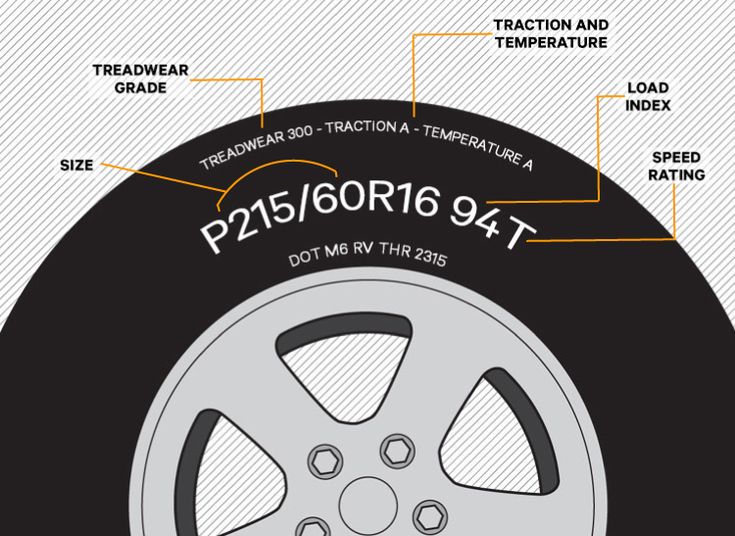 4-34 18.4-38 18.4-42 18.4-46 185-14 18x6.50x8 18x8.5-10 18x8.50x8 18x9.50x8 19.5L-24 195/75-14 195/75-15 20.5-25 20.8-34 20.8-38 205-16 205/60-17.5 205/75-14 205/80-12 20x10-9 20x10.00-10 20x10.00-8 20x10x8 20x8.00x10 20x8x8 20x9x8 21.5L-16.1 215/70-17.5 215/75-14 215/75-15 215/75-17.5 215/80-16 215/85-16 21L-24 21x11.00-8 22.5x10.00-8 225/55-18 225/65-18 225/70-16 225/70-17.5 225/70-19.5 225/70-22.5 225/75-15 225/75-16 225/75-17 22x10-12 22x10-8 22x10x10 22x10x9 22x11.00-8 22x11x10 22x11x8 22x11x9 22x12-8 22x8x11 22x9.00-8 22x9.50-12 23.1-26 23.1-30 23.1-34 23.5-25 23.5x8-11 235/50-18 235/55-17 235/60-17 235/60-18 235/65-17 235/65-18 235/70-15 235/70-16 235/70-17 235/75-15 235/75-16 235/75-17 235/75-17.5 235/80-16 235/80-17 235/80-22.5 235/85-16 23x10-12 23x10.50-12 23x10x10 23x11-10 23x7.50x12 23x8-10 23x8-11 23x8.50-12 23x8.50-14 23x9.50x12 24.5-32 245/55-17 245/65-15 245/65-17 245/70-15 245/70-16 245/70-17 245/70-17.5 245/70-19.5 245/75-15 245/75-16 245/75-17 245/75-22.5 245/85-16 24x10.
4-34 18.4-38 18.4-42 18.4-46 185-14 18x6.50x8 18x8.5-10 18x8.50x8 18x9.50x8 19.5L-24 195/75-14 195/75-15 20.5-25 20.8-34 20.8-38 205-16 205/60-17.5 205/75-14 205/80-12 20x10-9 20x10.00-10 20x10.00-8 20x10x8 20x8.00x10 20x8x8 20x9x8 21.5L-16.1 215/70-17.5 215/75-14 215/75-15 215/75-17.5 215/80-16 215/85-16 21L-24 21x11.00-8 22.5x10.00-8 225/55-18 225/65-18 225/70-16 225/70-17.5 225/70-19.5 225/70-22.5 225/75-15 225/75-16 225/75-17 22x10-12 22x10-8 22x10x10 22x10x9 22x11.00-8 22x11x10 22x11x8 22x11x9 22x12-8 22x8x11 22x9.00-8 22x9.50-12 23.1-26 23.1-30 23.1-34 23.5-25 23.5x8-11 235/50-18 235/55-17 235/60-17 235/60-18 235/65-17 235/65-18 235/70-15 235/70-16 235/70-17 235/75-15 235/75-16 235/75-17 235/75-17.5 235/80-16 235/80-17 235/80-22.5 235/85-16 23x10-12 23x10.50-12 23x10x10 23x11-10 23x7.50x12 23x8-10 23x8-11 23x8.50-12 23x8.50-14 23x9.50x12 24.5-32 245/55-17 245/65-15 245/65-17 245/70-15 245/70-16 245/70-17 245/70-17.5 245/70-19.5 245/75-15 245/75-16 245/75-17 245/75-22.5 245/85-16 24x10.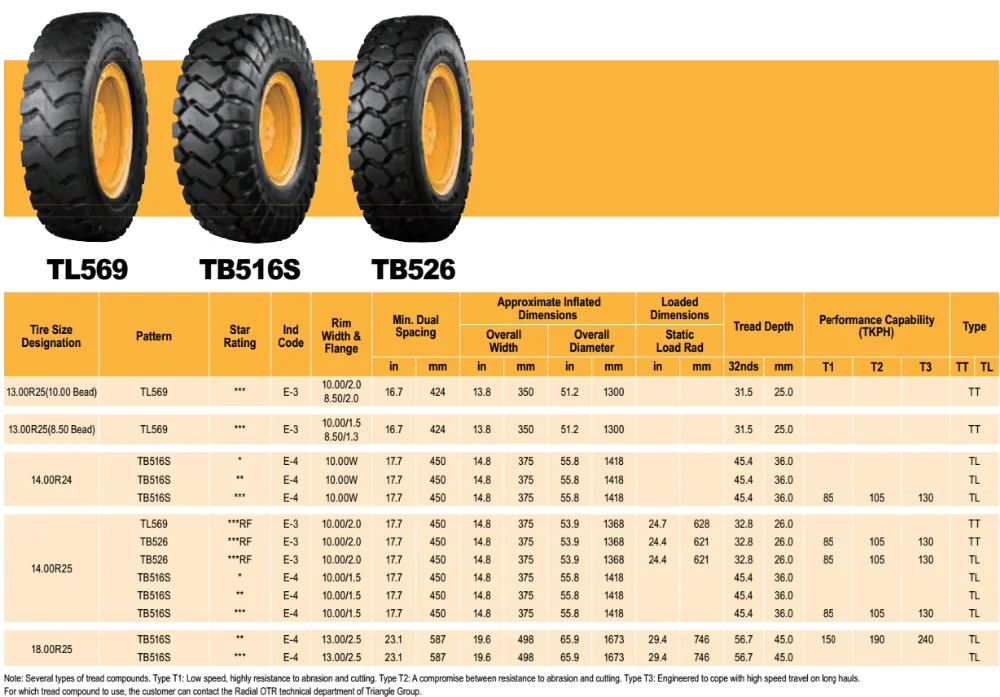 50-12 24x10x11 24x11-11 24x11.00-12 24x11.5x10 24x11x10 24x11x8 24x11x9 24x12-10 24x12-12 24x13x12 24x13x9 24x8-11 24x8.00-12 24x8.00-14 24x8.50-12 24x8.50-14 24x9.50-12 24x9x11 24x9x12 250-15 255/45-18 255/55-17 255/55-18 255/60-17 255/60-18 255/65-15 255/65-16 255/65-17 255/70-15 255/70-16 255/70-17 255/70-18 255/70-22.5 255/75-15 255/75-16 255/75-17 255/80-22.5 255/85-16 25x10-8 25x10x10 25x10x12 25x11x10 25x11x12 25x11x8 25x12x10 25x12x9 25x13-9 25x13.50-9 25x13.5x12 25x7.50-15 25x8-10 25x8-11 25x8.50-14 25x8x12 26.5-25 26.5-29 265/50-16 265/50-20 265/60-16 265/60-18 265/65-17 265/70-15 265/70-16 265/70-17 265/70-18 265/70-19.5 265/75-15 265/75-16 265/75-22.5 265/80-16 26x10-12 26x10-14 26x10.5x12 26x11-12 26x11-14 26x12-14 26x12.00-12 26x8-12 26x9-12 26x9-14 26x9.5-12 270/60-12 270/95-36 275/45-20 275/55-17 275/55-18 275/55-20 275/60-15 275/60-16 275/60-17 275/60-18 275/60-20 275/60HR17 275/65-16 275/65-17 275/65-18 275/70-16 275/70-17 275/70-18 275/70-22.5 275/80-22.5 275/80-24.5 27x10-14 27x10.
50-12 24x10x11 24x11-11 24x11.00-12 24x11.5x10 24x11x10 24x11x8 24x11x9 24x12-10 24x12-12 24x13x12 24x13x9 24x8-11 24x8.00-12 24x8.00-14 24x8.50-12 24x8.50-14 24x9.50-12 24x9x11 24x9x12 250-15 255/45-18 255/55-17 255/55-18 255/60-17 255/60-18 255/65-15 255/65-16 255/65-17 255/70-15 255/70-16 255/70-17 255/70-18 255/70-22.5 255/75-15 255/75-16 255/75-17 255/80-22.5 255/85-16 25x10-8 25x10x10 25x10x12 25x11x10 25x11x12 25x11x8 25x12x10 25x12x9 25x13-9 25x13.50-9 25x13.5x12 25x7.50-15 25x8-10 25x8-11 25x8.50-14 25x8x12 26.5-25 26.5-29 265/50-16 265/50-20 265/60-16 265/60-18 265/65-17 265/70-15 265/70-16 265/70-17 265/70-18 265/70-19.5 265/75-15 265/75-16 265/75-22.5 265/80-16 26x10-12 26x10-14 26x10.5x12 26x11-12 26x11-14 26x12-14 26x12.00-12 26x8-12 26x9-12 26x9-14 26x9.5-12 270/60-12 270/95-36 275/45-20 275/55-17 275/55-18 275/55-20 275/60-15 275/60-16 275/60-17 275/60-18 275/60-20 275/60HR17 275/65-16 275/65-17 275/65-18 275/70-16 275/70-17 275/70-18 275/70-22.5 275/80-22.5 275/80-24.5 27x10-14 27x10.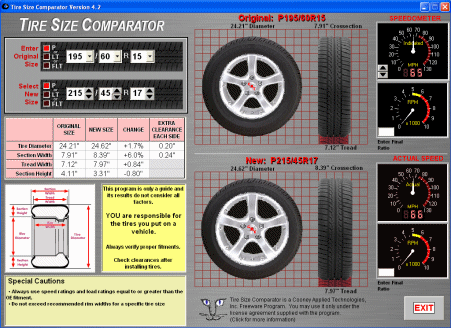 50-15 27x10x12 27x11-12 27x11-14 27x12-14 27x12x12 27x8.50-14 27x8.50-15 27x9-12 27x9-14 27x9.50-15 28-Dec 28-Nov 285/45-19 285/50-20 285/60-16 285/60-17 285/60-18 285/65-17 285/65-18 285/70-16 285/70-17 285/70-19.5 285/75-16 285/75-24.5 28L-26 28l26 28x10-14 28x12-15 28x8.50x14 28x9-14 28x9-15 29.5-25 29.5-29 290/95-34 295/45-20 295/50-16 295/70-17 295/70-22.5 295/75-16 295/75-22.5 295/75-24.5 295/80-22.5 29x11-14 29x12-15 29x12.50-15 29x8-15 29x9-14 29x9.50-15 3.40/3.00X5 30.5L-32 300/70-20 305/45-17 305/50-15 305/50-20 305/55-20 305/60-18 305/70-16 305/70-17 305/70-22.5 305/75-24.5 305/85-16 305/85-22.5 30x10-14 30x9.50-15 30x9.50-16 315/45-22.5 315/70-15 315/70-17 315/70-22.5 315/75-15 315/75-16 315/75-22.5 315/75-24.5 315/80-22.5 31x10.50-15 31x10.50-16.5 31x11.50-15 31x11.50-16 31x12.50-16 31x13.5-15 31x15.50-15 320/70-20 320/70-24 320/80-18 320/85-34 320/90-46 325/60-15 325/60-18 325/60-20 325/65-18 325/80-16 32x10-16 32x11.50-15 32x11.50-16 32x12.50-15 32x12.50-16.5 32x9-16 33x10.
50-15 27x10x12 27x11-12 27x11-14 27x12-14 27x12x12 27x8.50-14 27x8.50-15 27x9-12 27x9-14 27x9.50-15 28-Dec 28-Nov 285/45-19 285/50-20 285/60-16 285/60-17 285/60-18 285/65-17 285/65-18 285/70-16 285/70-17 285/70-19.5 285/75-16 285/75-24.5 28L-26 28l26 28x10-14 28x12-15 28x8.50x14 28x9-14 28x9-15 29.5-25 29.5-29 290/95-34 295/45-20 295/50-16 295/70-17 295/70-22.5 295/75-16 295/75-22.5 295/75-24.5 295/80-22.5 29x11-14 29x12-15 29x12.50-15 29x8-15 29x9-14 29x9.50-15 3.40/3.00X5 30.5L-32 300/70-20 305/45-17 305/50-15 305/50-20 305/55-20 305/60-18 305/70-16 305/70-17 305/70-22.5 305/75-24.5 305/85-16 305/85-22.5 30x10-14 30x9.50-15 30x9.50-16 315/45-22.5 315/70-15 315/70-17 315/70-22.5 315/75-15 315/75-16 315/75-22.5 315/75-24.5 315/80-22.5 31x10.50-15 31x10.50-16.5 31x11.50-15 31x11.50-16 31x12.50-16 31x13.5-15 31x15.50-15 320/70-20 320/70-24 320/80-18 320/85-34 320/90-46 325/60-15 325/60-18 325/60-20 325/65-18 325/80-16 32x10-16 32x11.50-15 32x11.50-16 32x12.50-15 32x12.50-16.5 32x9-16 33x10.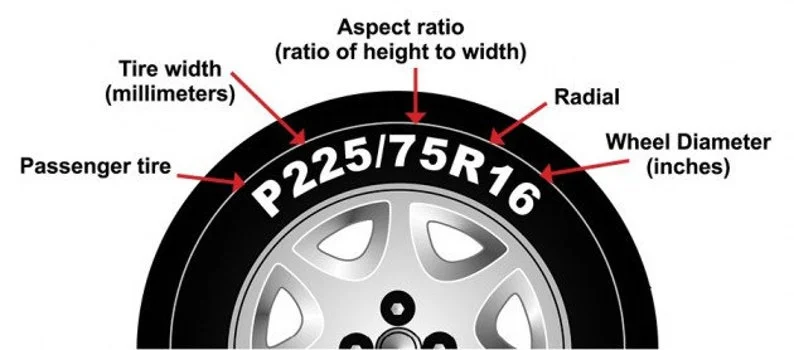 50x15 33x12.50-15 33x12.50-16.5 33x13.50-15 33x13.50-16 33x14.50-15 33x14x15 33x15.5-16.5 33x9.50-15 340/80-18 340/85-24 340/85-28 345/55-16 345/55-17 34x9.50-15 34x9x16 35.5-32 355/60-20 355/65-18 355/80-20 35x12.5-16 35x12.50-15 35x12.50-16.5 35x12.50-17 35x12.50-20 35x13.50-15 35x13.50-16 35x14-15 35x14-16 360/70-24 365/60-22.5 365/65-16 36x12.50-15 36x12.50-16.5 36x13x16 36x14-16.5 37x12.50-16.5 37x12.50-17 37x12.50-20 37x12.50x16 37x13.50-17 37x13.50-20 38.5x15-16.5 380/85-24 380/85-28 380/85-30 385/95R24 38x12.50x16.50 38x13x16 38x15.50R16.5 395/85-20 4.00x4.80x8 4.10/3.50x4 4.10/3.50x5 4.10/3.50x6 4.10x3.50x6 400/70-20 400/80-28 405/70-20 40x19-19.5 41x14.00-20 420/70-24 420/70-28 420/70-30 420/80-46 420/90-30 425/65-22.5 43/16.00x20 440/65-28 440/80-28 440/80-34 445/65-19.5 445/65-22.5 445/70-24 44x18.00-20 455/55R22.5 460/65-24 480/65-28 480/80-30 5.00/5.70x8 5.30/4.50x6 550/65-25 555/70-25 6.00-14 6.50-10 6.50-16 6.50-20 6.70-15 600/50-22.5 600/55-26.5 600/65-34 6x12 7-17.5 7.
50x15 33x12.50-15 33x12.50-16.5 33x13.50-15 33x13.50-16 33x14.50-15 33x14x15 33x15.5-16.5 33x9.50-15 340/80-18 340/85-24 340/85-28 345/55-16 345/55-17 34x9.50-15 34x9x16 35.5-32 355/60-20 355/65-18 355/80-20 35x12.5-16 35x12.50-15 35x12.50-16.5 35x12.50-17 35x12.50-20 35x13.50-15 35x13.50-16 35x14-15 35x14-16 360/70-24 365/60-22.5 365/65-16 36x12.50-15 36x12.50-16.5 36x13x16 36x14-16.5 37x12.50-16.5 37x12.50-17 37x12.50-20 37x12.50x16 37x13.50-17 37x13.50-20 38.5x15-16.5 380/85-24 380/85-28 380/85-30 385/95R24 38x12.50x16.50 38x13x16 38x15.50R16.5 395/85-20 4.00x4.80x8 4.10/3.50x4 4.10/3.50x5 4.10/3.50x6 4.10x3.50x6 400/70-20 400/80-28 405/70-20 40x19-19.5 41x14.00-20 420/70-24 420/70-28 420/70-30 420/80-46 420/90-30 425/65-22.5 43/16.00x20 440/65-28 440/80-28 440/80-34 445/65-19.5 445/65-22.5 445/70-24 44x18.00-20 455/55R22.5 460/65-24 480/65-28 480/80-30 5.00/5.70x8 5.30/4.50x6 550/65-25 555/70-25 6.00-14 6.50-10 6.50-16 6.50-20 6.70-15 600/50-22.5 600/55-26.5 600/65-34 6x12 7-17.5 7.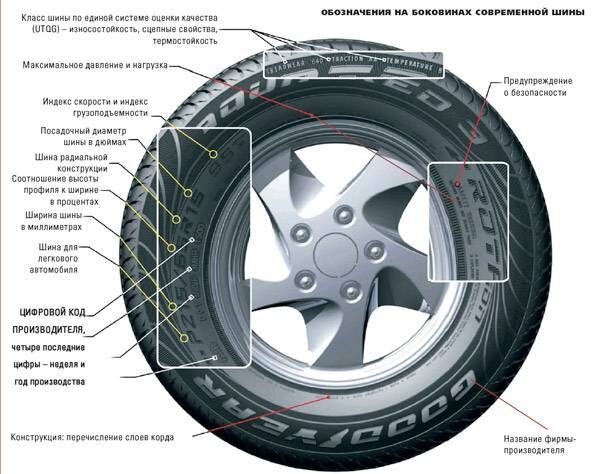 00-12 7.00-14 7.00-15 7.00-15TR 7.00-16 7.00-17 7.00-18 7.00-20 7.2-24 7.50-10 7.50-15 7.50-15TR 7.50-16 7.50-17 7.50-18 7.50-20 700/45-22.5 700/50-26.5 700/50-34 700/55-34 700/70-34 705/70-25 710/45-26.5 710/55-34 73/44.00-32 750/55-26.5 750/65-25 755/70-25 8-17.5 8-19.5 8-22.5 8.00-16.5 8.15x15 8.25-15 8.25-15TR 8.25-20 8.3-24 8.50-17.5 8.75-16.5 8x12 8x15 8x16 9-14.5MH 9-17.5 9-22.5 9.00-15 9.00-15TR 9.00-16 9.00-20 9.5-16 9.5-24 9.5-28 9.5-32 9.5-36 9.5-38 9.50-16.5 H70-14ST H78-14ST H78-15 H78-15ST L78-16 LR78-15 LR78-16 Nov-36 Nov-38 NR78-15 Oct-32 Oct-38 PR78-15 PR78-16 QR78-15 QR78-16 Skidsteer
00-12 7.00-14 7.00-15 7.00-15TR 7.00-16 7.00-17 7.00-18 7.00-20 7.2-24 7.50-10 7.50-15 7.50-15TR 7.50-16 7.50-17 7.50-18 7.50-20 700/45-22.5 700/50-26.5 700/50-34 700/55-34 700/70-34 705/70-25 710/45-26.5 710/55-34 73/44.00-32 750/55-26.5 750/65-25 755/70-25 8-17.5 8-19.5 8-22.5 8.00-16.5 8.15x15 8.25-15 8.25-15TR 8.25-20 8.3-24 8.50-17.5 8.75-16.5 8x12 8x15 8x16 9-14.5MH 9-17.5 9-22.5 9.00-15 9.00-15TR 9.00-16 9.00-20 9.5-16 9.5-24 9.5-28 9.5-32 9.5-36 9.5-38 9.50-16.5 H70-14ST H78-14ST H78-15 H78-15ST L78-16 LR78-15 LR78-16 Nov-36 Nov-38 NR78-15 Oct-32 Oct-38 PR78-15 PR78-16 QR78-15 QR78-16 Skidsteer Let’s face it, one of the most confusion things about buying tire chains is figuring out your tire size so you know what size chain to buy.
Metric Sizing
Most tires sold today are sized by the “metric” system. This sizing can be represented with no letter before the size, P-metric, LT-metric and ST-metric. Common examples of this are as follows: 235/75R15, P235/75R15, and LT235/75R15.
This sizing can be represented with no letter before the size, P-metric, LT-metric and ST-metric. Common examples of this are as follows: 235/75R15, P235/75R15, and LT235/75R15.
In these examples the first set of 3 digits is the width of the tire, measured from sidewall to sidewall, in millimeters, NOT the tread width.
The second group of digits is the “aspect ratio”. The Aspect Ratio is the height of sidewall from the wheel to the top of the tread. The height of the sidewall is a percent of the tire width ...the aspect ratio. In our example, 265/75, the sidewall height is 75% of the 265mm width, or 198mm.
The third set of digits is the rim diameter in inches.
Flotation sizing is used for some cars and truck, and used for small tires such as the ones used on trailers, tractors, and ATVs ie... 22x10x10, 18x9.5x8. All of the measurements are in inches. The first number is for the height.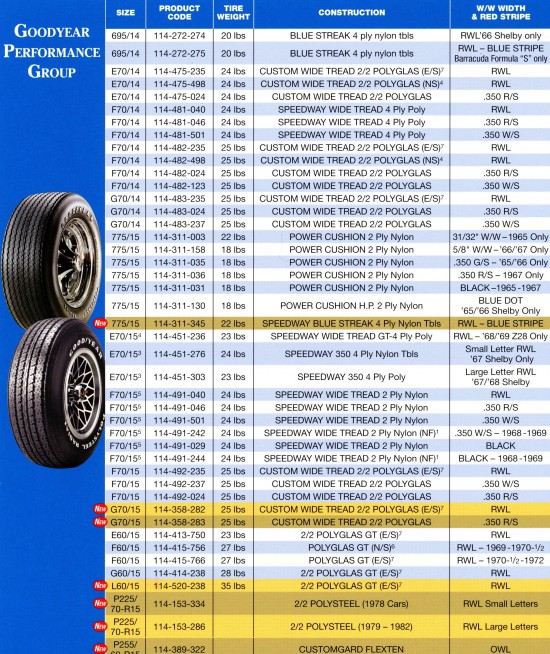 The second number is the sidewall width. The last digits are the rim diameter.
The second number is the sidewall width. The last digits are the rim diameter.
Numeric sizing is used light truck, 205-16, commercial truck, 11-22.5, and agricultural, 9.5-24, applications. The first digits are the width, sidewall to sidewall. The second digits represent the rim size. If your tire size happens to have three sets of numbers, 31x15.50-15, the first number is the height, the second number is the width, and the third number is the rim diameter.
Tire chains can improve your vehicle’s traction in ice and snow. But what size of tire chains do you need for your tires? Well, the answers are right here.
Are tire chains universal? Can you use any tire chain that you come across? What size of tire chains should you purchase for your vehicle?
Tire chains are designed to fit different tire sizes. Therefore, the size you should buy will depend on your vehicle’s tire size. The tire size is usually indicated on the tire’s sidewall, looking something like 175/65R/14. You will then buy tire chains that correspond to this number.
If you are in the market for tire chains, you may be wondering which size to choose for your tires. Well, this guide has all the information that you need. In this article, we will share tips for choosing the right size of tire chains for your tires.
We are committed to publishing well-researched, informative, helpful and high-quality articles. And we have an editorial team of seasoned professionals, drawn from various fields and industries, to enable us to meet this goal. Therefore, you can be assured you are getting your information from a trustworthy source.
When winter comes around, most drivers will swap their all-season or summer tires with their set of winter tires. But, as much as winter tires may provide you with some much-needed traction, it may not be enough, especially if you live in areas that experience dense, heavy snowing during the winter months.
And this is where tire chains come in. Tire chains will bite deep into heavy snow, ice, and slush, thus providing your vehicle with that extra traction it needs to pull through while ensuring you arrive safely at your destination.
However, if you’ve never purchased a set of tire chains before, you may be wondering about which size to choose for your tires. Well, this article will walk you through everything that you need to know about tire chains as well as how to choose the right size for your vehicle.
About Tire ChainsSo, what exactly are tire chains? Well, tire chains are more of a chain system, which has been designed to cover your vehicle’s wheel or tire setup.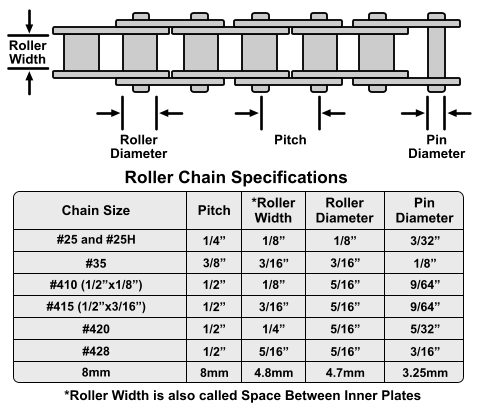 When properly installed, this chain system will help to enhance your vehicle’s grip and traction in snowy conditions.
When properly installed, this chain system will help to enhance your vehicle’s grip and traction in snowy conditions.
Also, tire chains can help your vehicle to navigate through frozen surfaces such as ice-covered roads. So, if you live in a mountainous region or any area that experiences heavy snowing or ice-covered roads during the winter months, then tire chains will come in handy.
Also, some states may require drivers to install them in case inclement weather makes it unsafe or dangerous to drive using the ordinary tire and wheel setup. Some of the states where drivers may be required to install tire chains on their vehicles include Colorado, Oregon, Nevada, Washington, and California. Usually, road signs will be put up requiring drivers of certain vehicles to carry tire chains and when to use them.
When shopping for tire chains for your vehicle, you will come across numerous designs out there. For instance, you may come across a particular design, which usually covers the tread pattern of the tire.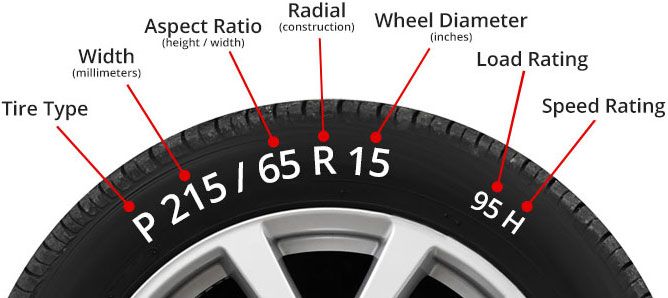 This one is usually mounted to the wheel. Another design wraps around the tires. This design is usually fastened using tensioners.
This one is usually mounted to the wheel. Another design wraps around the tires. This design is usually fastened using tensioners.
Tire chains usually wrap around tires’ tread. However, they latch on the tires tightly, thus preventing any slippage. When installed on the wheel set-up, they will grip the road, thus enabling the tires to deliver better traction in snowy conditions and frozen surfaces. In short, they will give your vehicle enhanced traction and better handling in inclement weather.
Apart from enhancing a vehicle’s grip and traction on snowy and frozen surfaces, tire chains can also help to minimize wheel spin. Wheel spin usually occurs when the force supplied to the tire’s tread through the engine is bigger than the available tread-to-surface friction. As a result, the tire will lose friction, resulting in wheel spin.
However, while tire chains will significantly boost your vehicle’s grip and traction when driving in snowy and icy conditions, they usually come with various restrictions, depending on the state. For instance, in some areas, drivers are not allowed to exceed certain speed limits when using tire chains.
For instance, in some areas, drivers are not allowed to exceed certain speed limits when using tire chains.
Just like tires, tire chains come in different sizes. These different sizes are designed to fit the different sizes of tires out there. So, when it comes to buying tire chains, you need to make sure you choose the right size. And to ensure you choose the right size, you will first need to determine your tire sizes. Here are the steps to follow.
First, you will need to take a closer look at the side of your tires. Here, you will see a collection of some letters and numbers.
Second, you should identify and note down the first three numbers on the tire that have been grouped. These numbers usually follow a particular letter. If you are driving a passenger vehicle, then the three letters will follow the letter P, which denotes a passenger vehicle tire. The three numbers indicate the tire’s width in millimeters.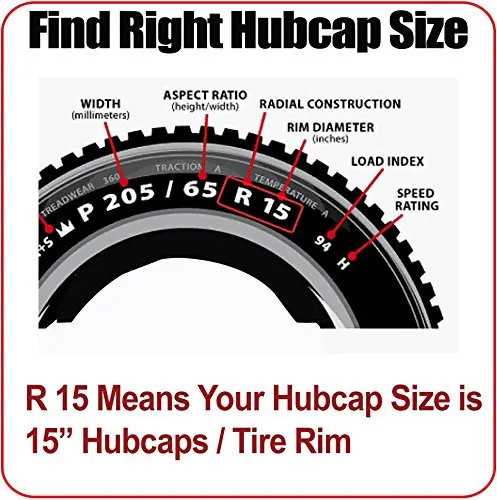
Third, note down the two numbers before the R and after the dash. These two numbers will indicate the tire’s width to height ratio.
Fourth, locate and note down the two numbers after the R. In most tires, these two numbers will represent the wheel diameter, which is usually indicated in inches.
Fifth, write down all these numbers together, separated by slashes or dashes. The numbers you’ve written down should resemble something like this 175/65R/14, depending on your tire sizes.
You will then visit a local auto supply store, hardware store or any other place where they may be selling tires and present this piece of paper. The store attendant will then retrieve the right tire chains according to your tire sizes.
Installing Tire ChainsAfter purchasing a set of tire chains based on your tire sizes, you can now proceed to install them. And, you don’t need complex tools or skills to install them. You only need the chains. Usually, tire chains come with mounting instructions on how to do it.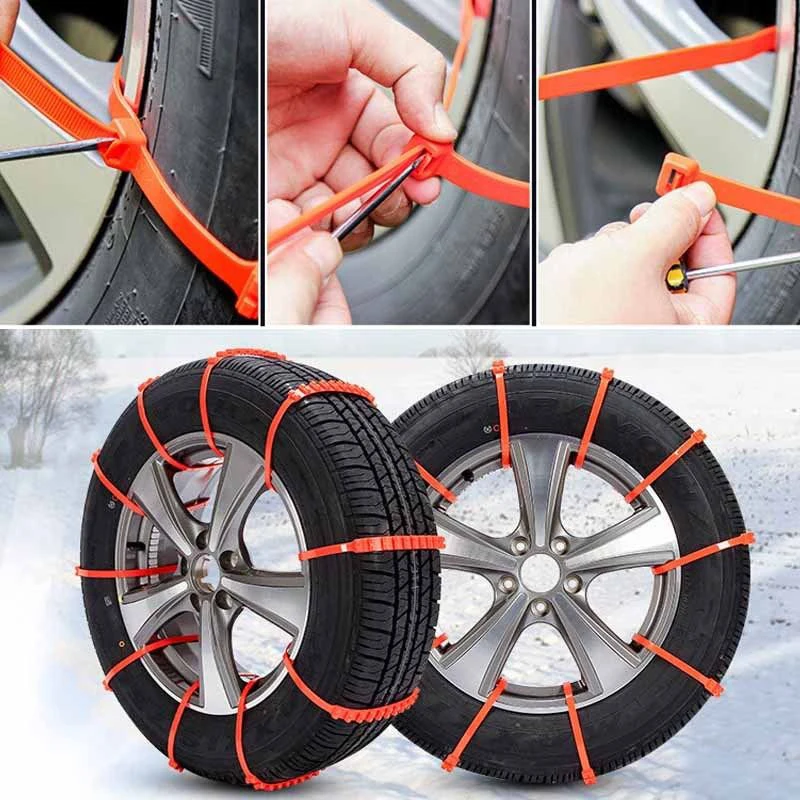 So, you should encounter any issues with this process.
So, you should encounter any issues with this process.
However, before you proceed to install the chains, you should first check your vehicle’s wheel drive. If your vehicle is a front-wheel drive, then you should install the tire chains on the front wheels. On the other hand, if your vehicle is rear-wheel drive, then you will install the tire chains on the rear wheels.
And if you happen to have an all-wheel or four-wheel drive vehicle, you can install the chains on either the front, rear or all wheels.
After you’ve finished installing the tire chains, you should check they have been properly installed before you start driving. All the chains should run straight and tight around the tire sides. They shouldn’t be loose or misaligned. If you notice such an issue, you should first fix it before you start driving.
From there, you should then drive for around 100 feet at the side of the road. You should then check again whether there’s anything loose or they are misaligned. And if everything looks good, then you are ready to hit the road.
And if everything looks good, then you are ready to hit the road.
A reliable set of tire chains will come in handy during the months. They will help to boost your vehicle’s grip and traction on snow-covered roads and frozen surfaces. You just need to ensure you purchase the right size, depending on your tire size.
Today we would like to talk about how to choose the right bar and chain for chainsaws (power saws). This article will be useful for beginners who have just bought a chainsaw and do not know how tires and chains differ from each other, how to choose a tire and chain, what to look for, as well as experienced users who use a chainsaw in their work at a semi-professional and professional level .
When buying a chainsaw, most likely the seller asked you questions related to buying a chainsaw and asked how often and what you are going to saw. Depending on this, the appropriate models are offered to the buyer. In this article, we will not touch on the choice of the chainsaw itself, but will concentrate on the issue of choosing an additional or main bar and chain.
Depending on this, the appropriate models are offered to the buyer. In this article, we will not touch on the choice of the chainsaw itself, but will concentrate on the issue of choosing an additional or main bar and chain.
There are 3 classes of chainsaws: amateur, semi-professional, professional.
Hobbyist saws, as a rule, are designed for periodic work, have low power (up to 2 kW), low weight, low vibration. This is the most common group and chainsaws from this group are most often bought by summer residents and owners of private houses. Chainsaws from this class allow you to cut tree branches, harvest firewood, and do small repairs. Even a not very experienced user can manage and use such a saw.
Semi-professional saws have more power (from 2kW) and are designed for longer work in construction. The weight of such a saw is much more than an amateur one. Such chainsaws are used at the stage of new construction for work related to wood: harvesting rafters, cutting boards for the floor, sheathing the house with timber and other works.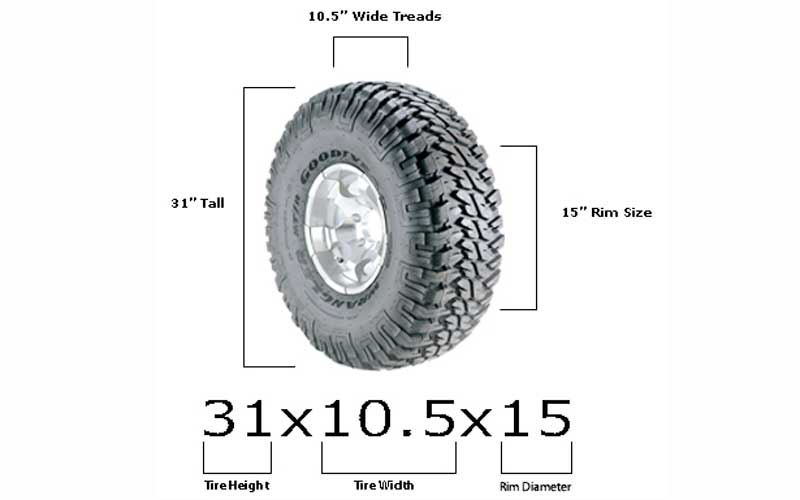 Unfortunately, such saws are also not designed for continuous operation for 6-8 hours or more.
Unfortunately, such saws are also not designed for continuous operation for 6-8 hours or more.
Professional saws are used on an industrial scale in enterprises that are engaged in felling and felling trees around the clock. Such saws allow you to work for a long time, and in the most difficult places: hard rocks, thick and gnarled trees. The power of such a saw can reach up to 6 kW. A professional saw weighs more than 6 kg, vibrates and makes a lot of noise during operation, and is also quite difficult to control.
When buying a chainsaw, the bar and chain are included. Pay attention to the characteristics of the bar and chain that come with the kit. These parameters will allow you to quickly find in the future, choose chain and tire for chainsaw , and also buy them with a minimum waste of time.
One of the tire parameters is its size. As a rule, tire size is indicated in inches, sometimes in centimeters.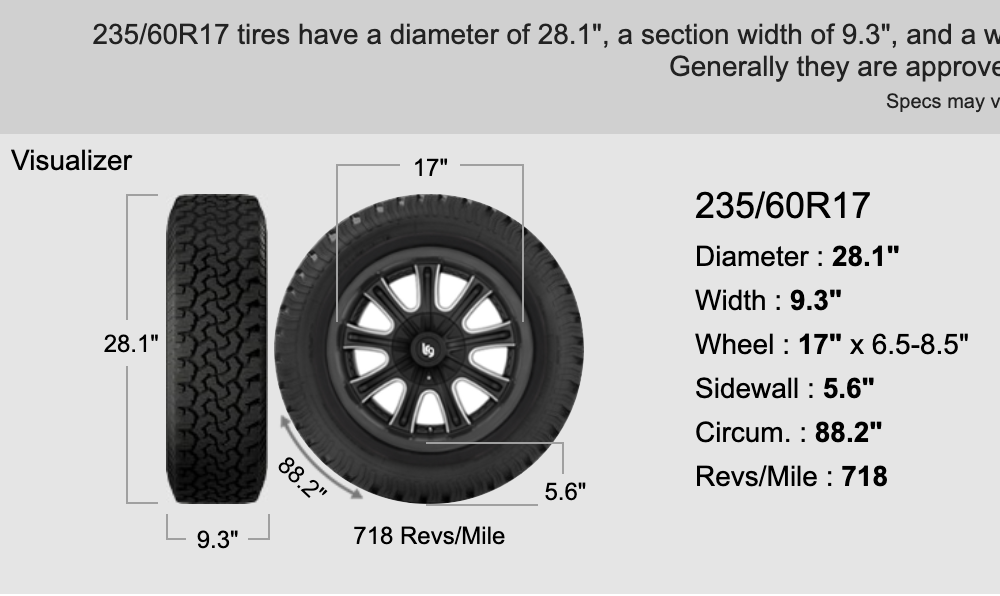 We recommend using the size in inches. The most commonly used tire sizes are 11″, 12″, 13″, 14″, 15″, 16″, 18″, 20″, 21″, 22″.
We recommend using the size in inches. The most commonly used tire sizes are 11″, 12″, 13″, 14″, 15″, 16″, 18″, 20″, 21″, 22″.
The smaller tire size is used for easier work. For example, a chainsaw with an 11-13 inch tire installed is used as a delimber, and is also used to cut small thin boards. This tire is small and allows you to accelerate the chain at high speed, which allows you to work quickly. The most used and versatile tire size is 14-16 inches. Such tires allow both harvesting firewood and using a chainsaw (electric saw) as a delimber. Tires 18 - 22 "are used for sawing thick trees when harvesting firewood. Such tires are used in semi-professional, professional and powerful saws.
Your saw manual should list the tire sizes you can use. It is not recommended to install a tire longer than the manufacturer indicates, because this affects the engine speed. The longer the tire, the more power the engine spends on rotating the crankshaft to accelerate the chain, and this affects engine wear. This is the most important rule to follow.
This is the most important rule to follow.
When choosing a tire for the chainsaw , you should pay attention to the shape of the tire itself.
For hobby saws use narrow and flat (low profile) tires . Such tires do not give a kickback and are very safe, which novice users will appreciate. There are also lightweight chainsaw tires. These tires have a reduced weight, which allows you to work and control the chainsaw on a canopy, as well as on the roof of the house. Lightweight saw bar consists of 2 steel plates, which are fastened inside with polyamide.
There is another group of saw bars - with replaceable heads. This is necessary for chainsaws operating in heavy duty felling, when the wear rate of the mechanisms increases. For domestic needs, a similar shape of the tire is not needed.
One of the important parameters of a guide bar is its shank (fastening).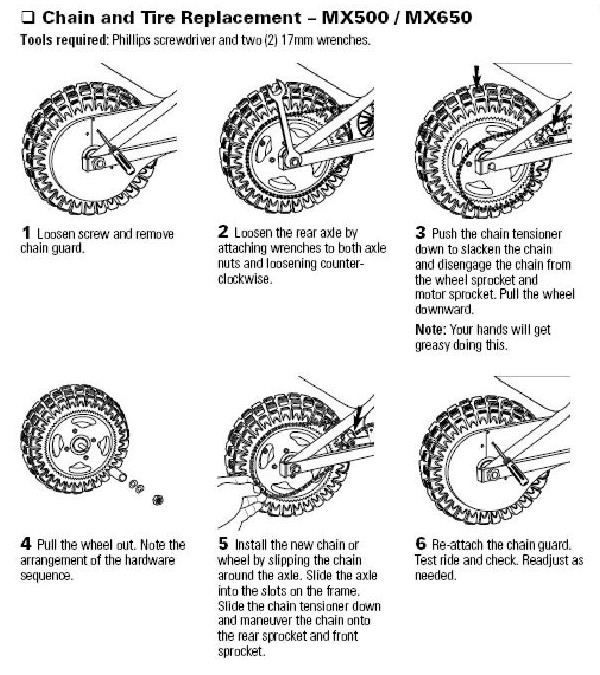 Each manufacturer has its own tire mount. Therefore, sometimes a bar from one saw may not fit another.
Each manufacturer has its own tire mount. Therefore, sometimes a bar from one saw may not fit another.
Since the bar is directly connected to the chain that is mounted on it, the chain pitch must be taken into account. Find out what it is below.
In order to select a chain for a chainsaw, you need to know the following parameters (they intersect with the parameters of the saw bar).
Chain size must match your tire size. In case you bought a chain smaller than your bar, you simply will not install it. If you bought a chain larger than your saw bar, the chain will not properly install and stretch over your bar. Both options lead to the impossibility of working with a chainsaw. Chain size is indicated in inches and can be 10″, 12″, 13″, 14″, 15″, 16″, 18″ and above.
Chain pitch (distance “a” in the figure) is measured in inches and marked 0.325″, 0.375″ and 0.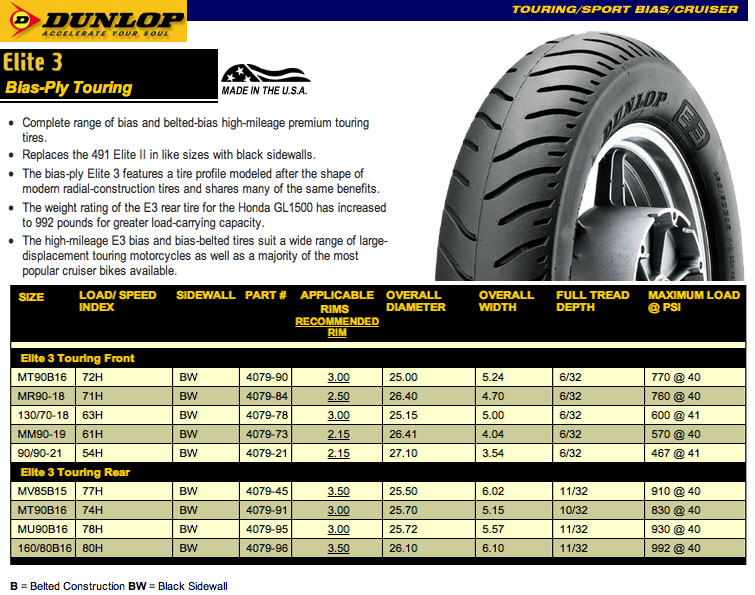 404″. In order not to confuse similar numbers, the chain pitch 0.375 ″ is most often denoted 3/8. Why is that? If we divide 3 by 8 we get 0.375. You need to understand that the higher the chain pitch, the more professional and powerful the saw. The most used and popular chain pitch is 0.325″. This chain pitch is used in amateur and semi-professional saws. If you are using a saw for delimbing and felling thin trees or construction work, then a chain pitch of 0.325" would be more appropriate. A chain with this pitch will make your work smoother, more comfortable and will not “tear” the wood when you start cutting. The 3/8 pitch chain is used when felling thin trees and for cutting medium thickness wood. And the chain pitch 0.404″ is used only in professional saws and we will not talk about it in this material, because it is not very popular and our readers will probably not come across it.
404″. In order not to confuse similar numbers, the chain pitch 0.375 ″ is most often denoted 3/8. Why is that? If we divide 3 by 8 we get 0.375. You need to understand that the higher the chain pitch, the more professional and powerful the saw. The most used and popular chain pitch is 0.325″. This chain pitch is used in amateur and semi-professional saws. If you are using a saw for delimbing and felling thin trees or construction work, then a chain pitch of 0.325" would be more appropriate. A chain with this pitch will make your work smoother, more comfortable and will not “tear” the wood when you start cutting. The 3/8 pitch chain is used when felling thin trees and for cutting medium thickness wood. And the chain pitch 0.404″ is used only in professional saws and we will not talk about it in this material, because it is not very popular and our readers will probably not come across it.
Shank thickness saw chain (drive link thickness) is one of the important chain parameters.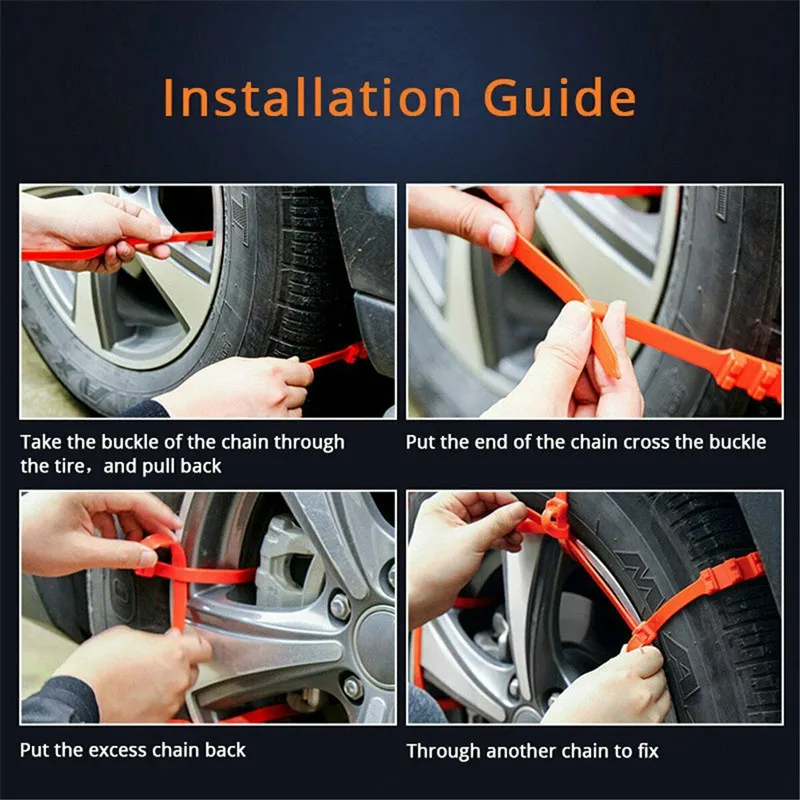 The drive links are designed for different tires, so pay attention to this parameter. The thickness of the shank is available in the following sizes: 1.1 mm, 1.3 mm, 1.5 mm, 1.6 mm and 2 mm (0.043”, 0.05”, 0.058”, 0.063” and 0.08” respectively) . The 1.1 mm chain is used in small saws and it is impossible to do serious work with such a chain. A chain with a drive link thickness of 1.3 mm - 1.6 mm is able to withstand heavy loads. The chain is quite popular and is used on amateur and semi-professional saws. If the thickness of the shank is 2 mm, then you can immediately say that the chain is used in professional saws. The conclusion can be drawn as follows: the greater the thickness of the drive link, and accordingly, the wider the groove of the chainsaw tire, the higher the chain quality and able to withstand heavy loads.
The drive links are designed for different tires, so pay attention to this parameter. The thickness of the shank is available in the following sizes: 1.1 mm, 1.3 mm, 1.5 mm, 1.6 mm and 2 mm (0.043”, 0.05”, 0.058”, 0.063” and 0.08” respectively) . The 1.1 mm chain is used in small saws and it is impossible to do serious work with such a chain. A chain with a drive link thickness of 1.3 mm - 1.6 mm is able to withstand heavy loads. The chain is quite popular and is used on amateur and semi-professional saws. If the thickness of the shank is 2 mm, then you can immediately say that the chain is used in professional saws. The conclusion can be drawn as follows: the greater the thickness of the drive link, and accordingly, the wider the groove of the chainsaw tire, the higher the chain quality and able to withstand heavy loads.
The number of chain links (chain tails) is a parameter by which the length of the chain can be determined. That is, when choosing, you can name the number of links or the size of the chain in inches. For some chain manufacturers, the number of links, and not the length of the chain, is indicated in the product article. Therefore, it is better if you know both parameters of the saw chain when buying.
For some chain manufacturers, the number of links, and not the length of the chain, is indicated in the product article. Therefore, it is better if you know both parameters of the saw chain when buying.
The following specifications are used to select a saw chain for a professional saw. Those who use household and semi-professional saws may not read our material further. We will touch on the rest of the parameters in passing, without going into depth.
Types of cutting links are different, we will touch on the main ones - chisel (in the picture on the left) and chipper (in the picture on the right). In the figure, we see what shape the chisel profile carries. In the context of such a profile resembles the number seven. In the people, this type is called the "seven". It is believed that this profile is designed for fast and high-quality work with a saw. The fact is that the entire working surface is strictly straight and evenly cuts into the wood.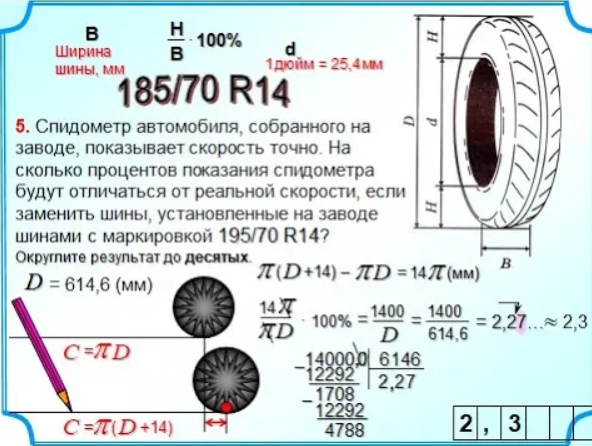 This type of link is mainly used on professional saws. However, it also has disadvantages. For example, sharpening such a chain is quite difficult, because even with a slight deviation from the correct angle, the work completely loses all the advantage of a chisel. The chipper type in section is very similar to the shape of a sickle, from which this profile received the name "sickle type" and "sickle". The contact area of such a link is larger, which entails higher loads and worsens cutting performance. However, the chipper type of the link tolerates dirt much more easily, and when sharpening, it is not necessary to observe the angles too precisely.
This type of link is mainly used on professional saws. However, it also has disadvantages. For example, sharpening such a chain is quite difficult, because even with a slight deviation from the correct angle, the work completely loses all the advantage of a chisel. The chipper type in section is very similar to the shape of a sickle, from which this profile received the name "sickle type" and "sickle". The contact area of such a link is larger, which entails higher loads and worsens cutting performance. However, the chipper type of the link tolerates dirt much more easily, and when sharpening, it is not necessary to observe the angles too precisely.
It is very important to know the material from which the cutting links of the saw chain are made. Mainly for saw chains, high-alloy chromium-nickel steel is used in the manufacture of cutting teeth. Therefore, when buying a new chain, it is necessary to visually check the workmanship of the cutting elements and their sharpening. But in order to use the tool when processing especially hard, frozen or heavily contaminated materials, it becomes necessary to harden the teeth. For such purposes, options are offered, on the teeth of which hard-alloy special soldering is made. They have increased wear resistance. The presence of soldering is marked on the surface of each cutting tooth.
For such purposes, options are offered, on the teeth of which hard-alloy special soldering is made. They have increased wear resistance. The presence of soldering is marked on the surface of each cutting tooth.
Depth of cut and profile height of chain . The depth of cut is the height of the profile, which indicates the depth of cut of the saw (it is worth adding that the size in height also plays a role, but the depth of cut is the main parameter). The higher the profile, the deeper the chain “takes”, which means higher performance. The smaller the profile, the thinner the chips are removed, that is, the chain does not bite deep into the wood. This depth can be adjusted by grinding the stops located at each cutter, but in the new chain these dimensions already have a certain type. There are two types of profile: 0.025” (0.635 mm) low profile chain and 0.03” (0.762 mm) high profile chain. This information should also be written in the characteristics of the saw (often they simply indicate the brands of chains that fit, but they already correspond to the desired size).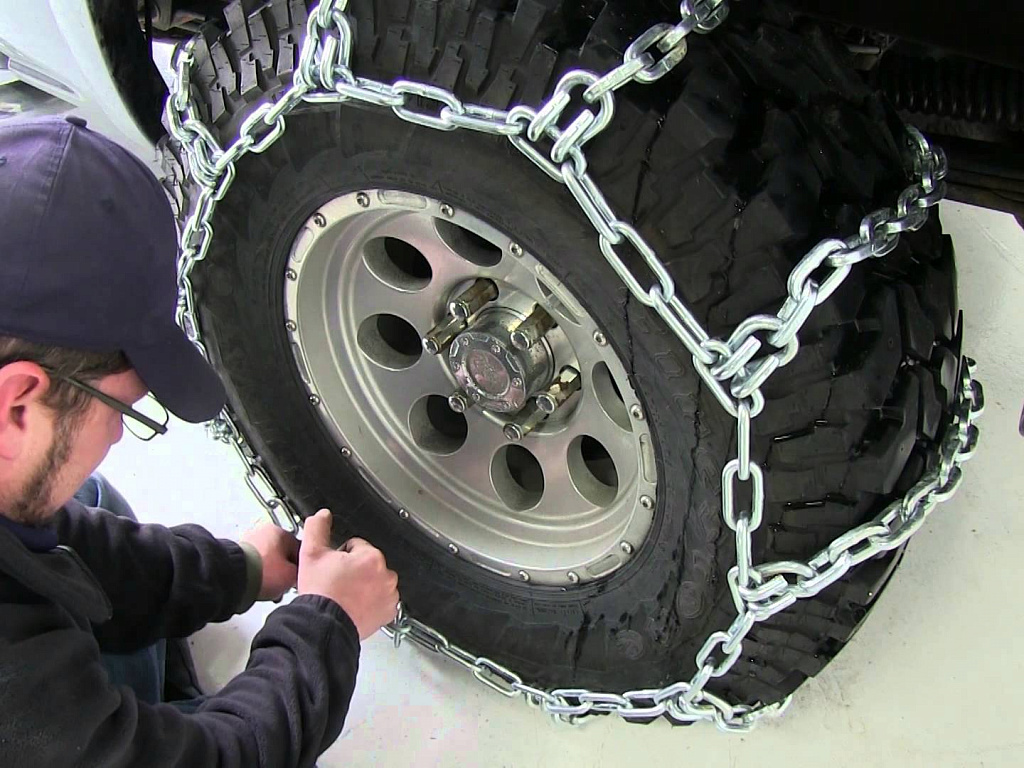 The choice here is not great, this information is given more for review. Indeed, when sharpening chains on your own, you need to know the type of profile in order to bring them into the appropriate form when sharpening the limiters. But at their core, both types are divided into professional and amateur chainsaw profiles. True, there are nuances here. Professional chainsaws do not always have high-profile chains, but household chainsaws are always equipped with low-profile options. And if everything is clear with the low profile types, then the high profile requires clarification. After all, it makes the chain highly productive, which means it increases the vibration and aggressiveness of the chain, as already mentioned. And strong vibration will not allow you to work with the saw for long hours at the logging site. This is where the developers did some kind of trick, they take into account the chain pitch in order to maintain low aggressiveness. After all, if the step is large (and this entails vibration) and the profile is high (this is also increased vibration), then in the end the saw, although it will cut quickly, will simply become inconvenient for long-term work.
The choice here is not great, this information is given more for review. Indeed, when sharpening chains on your own, you need to know the type of profile in order to bring them into the appropriate form when sharpening the limiters. But at their core, both types are divided into professional and amateur chainsaw profiles. True, there are nuances here. Professional chainsaws do not always have high-profile chains, but household chainsaws are always equipped with low-profile options. And if everything is clear with the low profile types, then the high profile requires clarification. After all, it makes the chain highly productive, which means it increases the vibration and aggressiveness of the chain, as already mentioned. And strong vibration will not allow you to work with the saw for long hours at the logging site. This is where the developers did some kind of trick, they take into account the chain pitch in order to maintain low aggressiveness. After all, if the step is large (and this entails vibration) and the profile is high (this is also increased vibration), then in the end the saw, although it will cut quickly, will simply become inconvenient for long-term work. And this balance is maintained by choosing not the two most effective parameters, but by alternating them. That is, if the step is large, the profile is low, if the step is smaller, you can make a high profile. This balancing allows the chainsaw to work less aggressively and efficiently at the same time. But it’s difficult to say which chain is better (with a large profile and a small pitch or a small profile and a maximum pitch), it all depends on the wood, working conditions, and everything is individual for each case, you just need to try. We also note that on highly professional saws when felling large trees, chains with a large pitch and a high profile are used, since speed is extremely important here. It happens that the profile is produced even more sounded, even 0.07” (1.778 mm), but this is extremely rare and is often used on machine units for felling. In general, this entire item can be attributed to the professional use of serious chainsaws. For an ordinary user, this parameter is important only in one case, when the saw is sharpened at home.
And this balance is maintained by choosing not the two most effective parameters, but by alternating them. That is, if the step is large, the profile is low, if the step is smaller, you can make a high profile. This balancing allows the chainsaw to work less aggressively and efficiently at the same time. But it’s difficult to say which chain is better (with a large profile and a small pitch or a small profile and a maximum pitch), it all depends on the wood, working conditions, and everything is individual for each case, you just need to try. We also note that on highly professional saws when felling large trees, chains with a large pitch and a high profile are used, since speed is extremely important here. It happens that the profile is produced even more sounded, even 0.07” (1.778 mm), but this is extremely rare and is often used on machine units for felling. In general, this entire item can be attributed to the professional use of serious chainsaws. For an ordinary user, this parameter is important only in one case, when the saw is sharpened at home.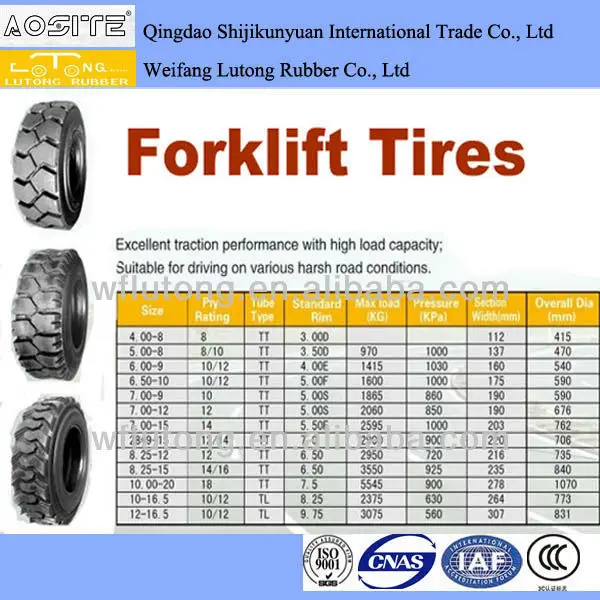 You can cut the depth limiters only with voiced knowledge, otherwise your household chainsaw will not cut at all and will definitely get tired of high loads.
You can cut the depth limiters only with voiced knowledge, otherwise your household chainsaw will not cut at all and will definitely get tired of high loads.
Rip and cross cut . The longitudinal type chain is designed for sawing wood along the grain, and the transverse type chain is designed for cutting across. Masters understand that the difference in wood resistance in two cases is different and for working across - you don’t need an acute angle, but for working along - the tools are sharpened very sharply. For chain saws, these parameters are: 25-35 degrees - for cross cutting; 5-15 degrees - for a longitudinal cut. These characteristics can be read on the chain and even seen with the naked eye on the cutting teeth themselves. By the way, each tree also loves different angles, so it’s worth looking into these parameters separately if you work professionally with wood.
Everything is trite, chainsaws are often used for cross cutting. If sawing along, then this is most often done with a circular saw, which is more efficient for this.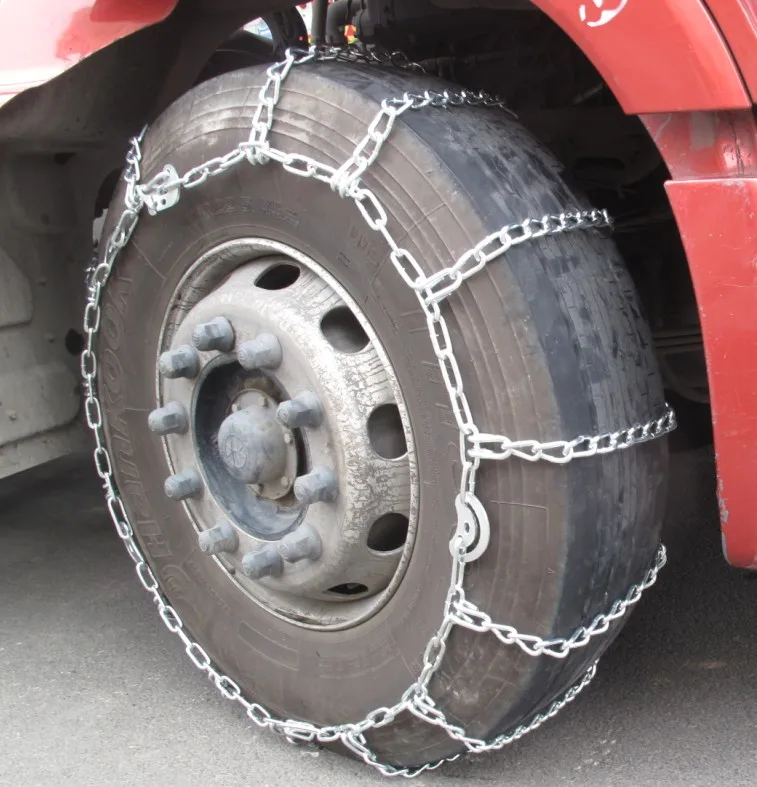 And that is why the demand for chains of the longitudinal type is so scanty that the market is not particularly involved in their development. Therefore, even finding a longitudinal type chain on the market is very, very difficult. Most choose the transverse type, and it was for these reasons that we discarded it to the very, very end. And this was the last parameter for classifying chains for chainsaws.
And that is why the demand for chains of the longitudinal type is so scanty that the market is not particularly involved in their development. Therefore, even finding a longitudinal type chain on the market is very, very difficult. Most choose the transverse type, and it was for these reasons that we discarded it to the very, very end. And this was the last parameter for classifying chains for chainsaws.
For a household chainsaw (not professional), this approach will be relevant, and only professionals should re-read everything written again. So, it’s worth starting the choice of a chain for a chainsaw from the disclosure of the instructions. If it is not there, we look for the model of our saw on the Internet and find all the important characteristics there. And in order to go buy a chain for your household tool, it is enough to write down the following: chainsaw brand (to buy a chain from the same manufacturer), the number of leading links (namely, leading, not cutting), the width of the groove of the tire (or the width of the leading link, tail) and the length of the tire (if we have the number of leading links, this can be discarded). Knowing all these parameters, we will definitely buy the right chain. If you know only the brand, you can suffer. After all, there are technological features of even well-known brands, where the sprocket, tire and chain are replaced for some reason with similar, but distinguishable types. And it is especially important to know all the indicated figures, if we saw cheap domestic production or from China (perhaps a fake brand), here it will not be difficult to buy a completely different chain, we see for ourselves, there are a lot of characteristics. Be careful! And professionals should definitely re-read everything that has been said a few more times. Having penetrated into the essence, everyone will learn to understand everything stated as correctly as possible, which in the future will certainly help to make even a good chainsaw even more efficient and reliable.
Knowing all these parameters, we will definitely buy the right chain. If you know only the brand, you can suffer. After all, there are technological features of even well-known brands, where the sprocket, tire and chain are replaced for some reason with similar, but distinguishable types. And it is especially important to know all the indicated figures, if we saw cheap domestic production or from China (perhaps a fake brand), here it will not be difficult to buy a completely different chain, we see for ourselves, there are a lot of characteristics. Be careful! And professionals should definitely re-read everything that has been said a few more times. Having penetrated into the essence, everyone will learn to understand everything stated as correctly as possible, which in the future will certainly help to make even a good chainsaw even more efficient and reliable.
Looking at any standard saw chain, there will always be two tails (two drive links) per cutting link. This is a standard and is followed by all chainsaw chain manufacturers. However, there are chains on the market where there are fewer cutting links, these are the so-called chains with half-pass and pass. In the first case, one more additional connecting link is inserted into every second pair of cutting teeth. In the second case, an additional link is already installed between each cutting tooth. As a result, a standard chain with 64 leading links (tail) should have 32 cutting teeth, that is, 50%. But in the case of a half pass, we will already get 40% of the working teeth, and with a pass - 37.5%. Who needs such chains? In the chain, only cutting teeth are valued, they are made using a special technology, they are coated and they are much more expensive than connecting links. If you can’t make the chain shorter, then skipping the cutting elements can significantly reduce the cost of the chain itself.
This is a standard and is followed by all chainsaw chain manufacturers. However, there are chains on the market where there are fewer cutting links, these are the so-called chains with half-pass and pass. In the first case, one more additional connecting link is inserted into every second pair of cutting teeth. In the second case, an additional link is already installed between each cutting tooth. As a result, a standard chain with 64 leading links (tail) should have 32 cutting teeth, that is, 50%. But in the case of a half pass, we will already get 40% of the working teeth, and with a pass - 37.5%. Who needs such chains? In the chain, only cutting teeth are valued, they are made using a special technology, they are coated and they are much more expensive than connecting links. If you can’t make the chain shorter, then skipping the cutting elements can significantly reduce the cost of the chain itself.
As a result, you can sell it cheaper and earn money at the same time.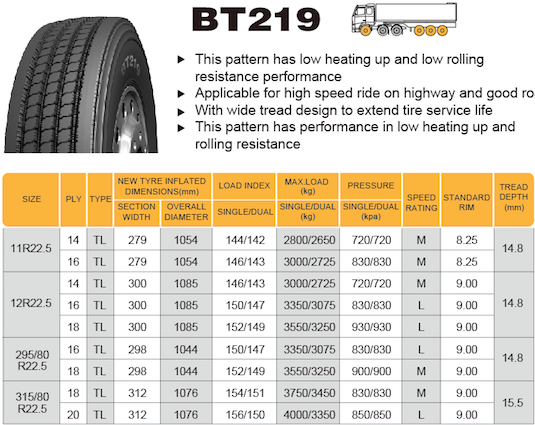 But there is only negative from such a chain, it makes the saw more aggressive, reduces its performance and even increases the wear of both the entire saw set and the chainsaw itself. It is not recommended to buy such a chain, its cheapness does not at all justify further repairs and work efficiency. In addition, no factory makes such chains, everything is made up at home from factory chains (at best), so it is clear that the build quality and durability of the chain itself is reduced several times. And when buying a chain on the market, we carefully study the sequence of links so as not to accidentally ruin our new device in such a popular way.
But there is only negative from such a chain, it makes the saw more aggressive, reduces its performance and even increases the wear of both the entire saw set and the chainsaw itself. It is not recommended to buy such a chain, its cheapness does not at all justify further repairs and work efficiency. In addition, no factory makes such chains, everything is made up at home from factory chains (at best), so it is clear that the build quality and durability of the chain itself is reduced several times. And when buying a chain on the market, we carefully study the sequence of links so as not to accidentally ruin our new device in such a popular way.
The simplest and most basic criterion that fixes chain wear is its stretch. If you cannot tighten it with the tension screw on the saw, you need to replace it. However, installing a new chain on an old worn sprocket and bar will cause even more wear. It is known that the chain wears out 2-3 times faster than the bar and sprocket, so to increase the durability it is worth resorting to trickery.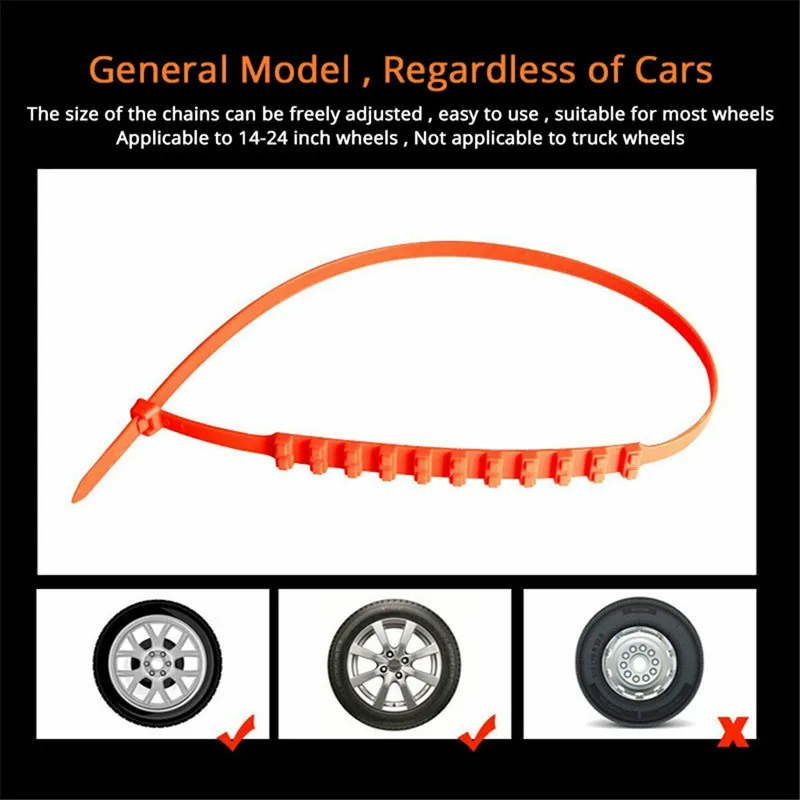 For example, you have a new chainsaw, you are going to work with it a lot and for a long time (if a saw is bought for five-minute work once a year, then one chain will last a lifetime). And in this case, we buy three chains at once for efficiency (it is possible with different pitches or with different types of cutting teeth relative to strength, if you have a professional tool). Further, after several hours of work with one chain, we make a replacement for another and so we constantly alternate the entire set (and do not forget to turn the tire over, it also requires uniform wear). As a result, all three chains will gradually stretch and grind at the same time as the tire and sprocket, and after the impossibility of stretching, it is already possible to safely change all the chains, the tire, and the drive sprocket. Believe me, with this approach, the gain in durability will be an order of magnitude higher than putting a new second chain on an already worn tire. In addition, a chain stretched almost to the limit will behave more quietly and more efficiently than a new one on an old tire and sprocket.
For example, you have a new chainsaw, you are going to work with it a lot and for a long time (if a saw is bought for five-minute work once a year, then one chain will last a lifetime). And in this case, we buy three chains at once for efficiency (it is possible with different pitches or with different types of cutting teeth relative to strength, if you have a professional tool). Further, after several hours of work with one chain, we make a replacement for another and so we constantly alternate the entire set (and do not forget to turn the tire over, it also requires uniform wear). As a result, all three chains will gradually stretch and grind at the same time as the tire and sprocket, and after the impossibility of stretching, it is already possible to safely change all the chains, the tire, and the drive sprocket. Believe me, with this approach, the gain in durability will be an order of magnitude higher than putting a new second chain on an already worn tire. In addition, a chain stretched almost to the limit will behave more quietly and more efficiently than a new one on an old tire and sprocket.
Many beginner gardeners make mistakes when choosing a saw blade for their tool. In this case, a chainsaw chain selection table can help. It was created taking into account the most popular models, which makes it possible to accurately select a saw set for almost every gardener.
The chainsaw chart is the best way to visually select a chainsaw. With its help, any novice gardener or feller will not need to spend hours looking for a product whose characteristics would correspond to the size of the factory kit.
The following factors were taken into account when creating it:
 It depends on it whether the new part will fit on the regular saw tire;
It depends on it whether the new part will fit on the regular saw tire; caliper. In most cases, it is in the range from 1.1 to 2 mm.
Thanks to the totality and accessible presentation of this data, everyone will be able to deal with this information.
The left column lists the most popular chain saw models. All other columns show tire sizes and other operating parameters of the saw set. Thanks to this arrangement of data, any novice feller can find an element that suits his tool in a few minutes.
| CHAIN AND BAR SIZE CHART FOR | CHAINSAW||||
| HUSQVARNA | ||||
| Chainsaw model | Bar length | Chain pitch | Bar groove | Number of links |
| 317/321 Electric, 325P5x, 334T, 335XPT, 338XPT | 25 cm / 10" | 3/8” | 1.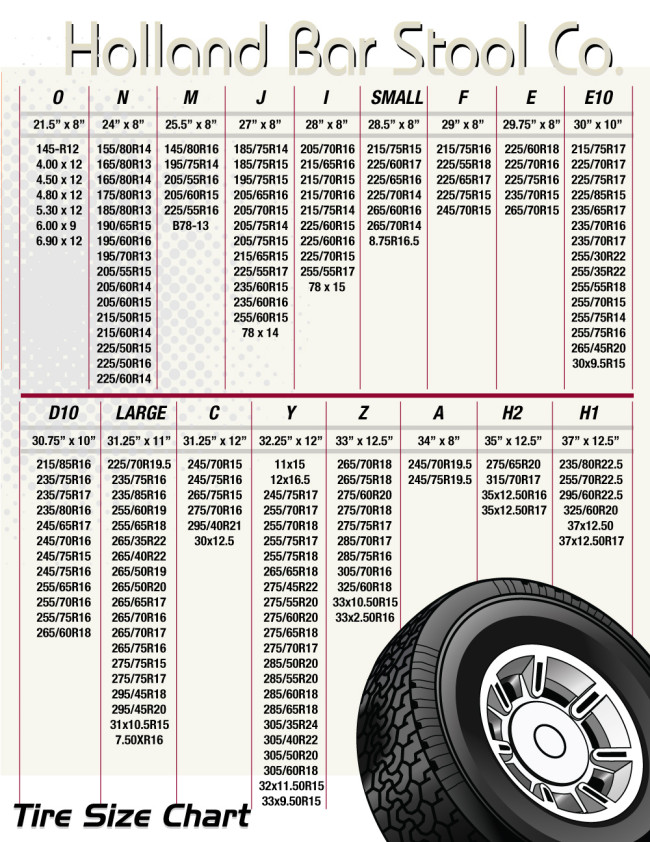 3 mm 3 mm | 45 pcs. |
| 336, 137(e), 142(e), 240e, 235e, 339XP, 340(e), 345(e), 445(e), 350, 450(e), 353, 460, 357XP, 359 , 55, 455(e) Rancher | 33 cm / 13 in. | 0.325” | 1.3 mm | 56 pcs. |
| 317, 321 Electric, 334T, 335XPT, 338XPT | 35 cm / 14" | 3/8” | 1.3 mm | 52 pcs. |
| 336, 137(e), 142(e), 240e, 235e, 339XP, 340(e), 345(e), 445(e), 350, 450(e), 353, 460, 357XP, 359 , 55, 455(e) Rancher | 38 cm / 15" | 0.325” | 1.3 mm | 64 pcs. |
| 336, 339XP, 340(e), 440(e), 345(e), 444, 445(e), 350, 450(e), 351, 353, 346XP, 460, 357XP, 359, 55, 455(e) Rancher | 40 cm / 16" | 0.325” | 1.3 mm | 66 pcs. |
| 317, 321 Electric, 334T, 335XPT, 338XPT | 40 cm / 16" | 3/8” | 1.3 mm | 56 pcs. |
| 339XP, 340(e), 345(e), 445(e), 350, 450(e), 353, 460, 357XP, 359, 55, 455(e) Rancher | 45 cm / 18 inches | 0.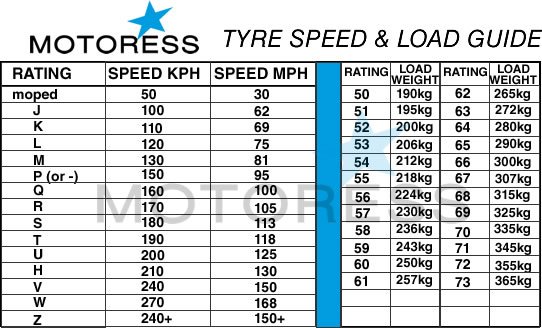 325” 325” | 1.3 mm | 72 pcs. |
| 353, 460, 357XP, 359, 55, 455(e) Rancher | 50 cm / 20 inches | 0.325” | 1.3 mm | 80 pcs. |
| 137(e), 142(e), 357, 240e, 235e, 340(e), 345(e), 445(e), 350, 450(e), 353, 460, 357XP, 359, 55 , 455(e) Rancher | 33 cm / 13 in. | 0.325” | 1.5 mm | 56 pcs. |
| 137(e), 142(e), 357, 240e, 235e, 340(e), 345(e), 445(e), 350, 450(e), 353, 460, 357XP, 359, 55 , 455(e) Rancher | 38 cm / 15 inches | 0.325” | 1.5 mm | 64 pcs. |
| 357, 55, 365, 372XP, 460, 357XP, 359, 455(e) Rancher, 570, 575XP | 38 cm / 15 inches | 3/8” | 1.5 mm | 56 pcs. |
| 137(e), 142(e), 357, 240e, 235e, 340(e), 345(e), 445(e), 350, 450(e), 353, 460, 357XP, 359, 55 , 455(e) Rancher | 40 cm / 16" | 0.325” | 1.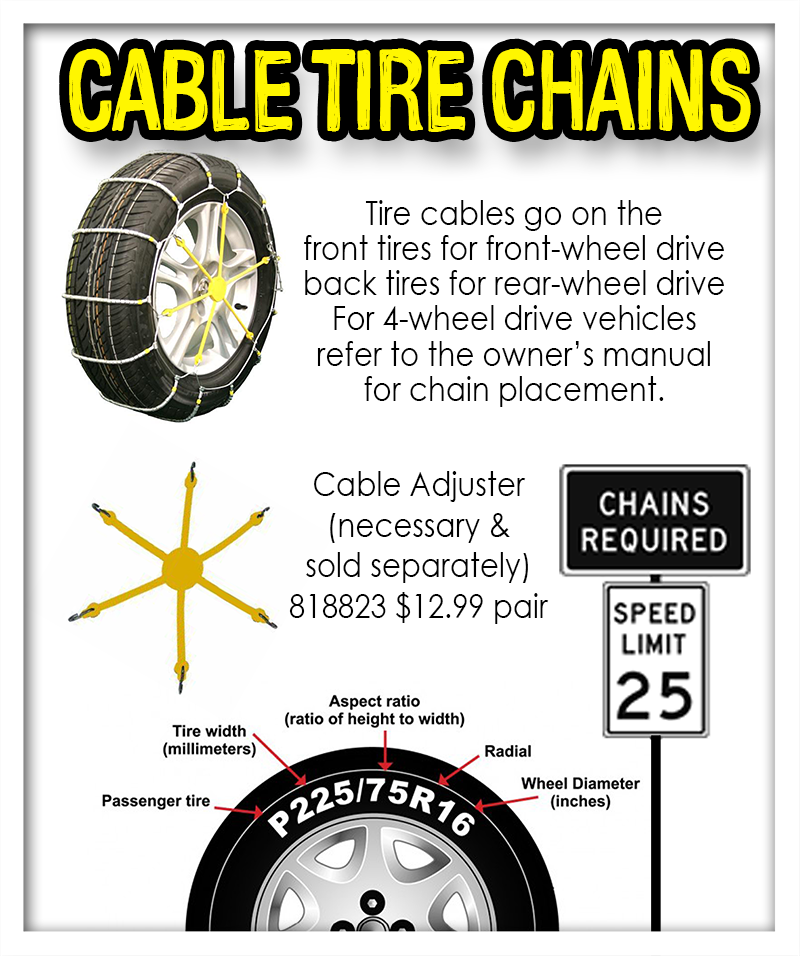 5 mm 5 mm | 66 pcs. |
| 357, 55, 365, 372XP, 460, 357XP, 359, 455(e) Rancher, 570, 575XP | 40 cm / 16" | 3/8” | 1.5 mm | 60 pcs. |
| 137(e), 142(e), 357, 240e, 235e, 340(e), 345(e), 445(e), 350, 450(e), 353, 460, 357XP, 359, 55 , 455(e) Rancher | 45 cm / 18 inches | 0.325” | 1.5 mm | 72 pcs. |
| 357, 55, 365, 372XP, 460, 357XP, 359, 455(e) Rancher, 570, 575XP | 45 cm / 18 inches | 3/8” | 1.5 mm | 68 pcs. |
| 137(e), 142(e), 357, 240e, 235e, 340(e), 345(e), 445(e), 350, 450(e), 353, 460, 357XP, 359, 55 , 455(e) Rancher | 50 cm / 20 inches | 0.325” | 1.5 mm | 80 pcs. |
| 357, 55, 365, 372XP, 460, 357XP, 359, 455(e) Rancher, 570, 575XP | 50 cm / 20 inches | 3/8” | 1.5 mm | 72 pcs. |
| 3120XP, 390XP, 395XP | 75 cm / 30 inches | 0. 404” 404” | 1.6 mm | 92 pcs. |
| CHAIN AND BAR SIZE CHART FOR | CHAINSAW||||
| MAKITA | ||||
| Chainsaw model | Bar length | Chain pitch | Bar groove | Number of links |
| DCS34, UC3010A | 35 cm / 14" | 3/8” | 1.1 mm | 52 pcs. |
| UC4010A | 40 cm / 16" | 3/8” | 1.1 mm | 56 pcs. |
| DCS230(T) | 25 cm / 10" | 3/8” | 1.3 mm | 40 pcs. |
| UC3001A, UC3003A, DCS330TH, DCS3400TH, UC3020A, UC3030A, DCS3500, DCS3410TH | 30 cm / 12" | 3/8” | 1.3 mm | 46 pcs. |
| DCS420, DCS4300, DCS4301, DCS33, DCS34, DCS330TH, DCS340, DCS341, UC3501A, UC3503A, UC3520A, UC3530A | 33 cm / 13" | 0.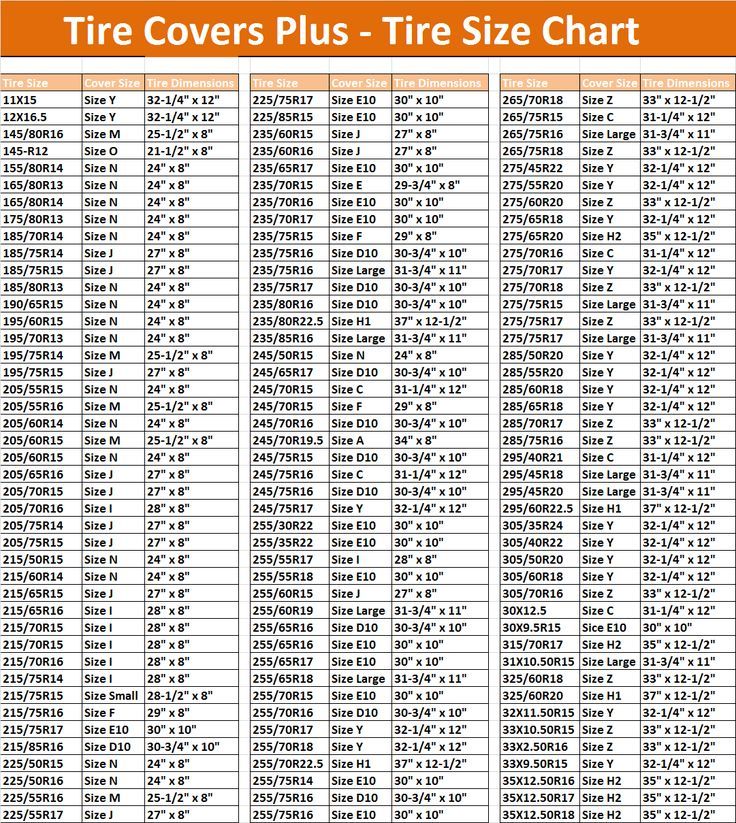 325” 325” | 1.3 mm | 56 pcs. |
| DCS3500, DCS3410TH | 35 cm / 14" | 3/8” | 1.3 mm | 52 pcs. |
| DCS420, DCS4300, DCS4301 | 38 cm / 15" | 0.325” | 1.3 mm | 64 pcs. |
| DCS400, DCS401, UC4001A, UC4003A, UC4020A, UC4030A, DCS3500 | 40 cm / 16" | 3/8” | 1.3 mm | 56 pcs. |
| DCS420, DCS4300, DCS4301 | 45 cm / 18" | 0.325” | 1.3 mm | 72 pcs. |
| UC4503A, UC4530A, DCS520, DCS4600S, DCS5000, DCS5200I | 45 cm / 18" | 3/8” | 1.3 mm | 62 pcs. |
| DCS6000, DCS6800I | 38 cm / 15" | 3/8” | 1.5 mm | 56 pcs. |
| DCS430, DCS431, DCS520, DCS4600S, DCS5000, DCS5200I, DCS600I, DCS6800I | 45 cm / 18" | 3/8” | 1. 5 mm 5 mm | 64 pcs. |
| DCS6400, DCS6401 | 45 cm / 18" | 3/8” | 1.5 mm | 68 pcs. |
| CHAIN AND BAR SIZE CHART FOR | CHAINSAW||||
| OLEO-MAC | ||||
| Chainsaw model | Bar length | Chain pitch | Bar groove | Number of links |
| GS940, 17E, 19E, 932C, 936, 937, 940 | 35 cm / 14" | 3/8” | 1.3 mm | 52 pcs. |
| 938, 941 | 38 cm / 15 inches | 0.325” | 1.3 mm | 64 pcs. |
| 938, 940C, 941C, 941CX | 40 cm / 16" | 0.325” | 1.3 mm | 66 pcs. |
| GS940, 17E, 19E, 932C, 936, 937, 940, 1800E, 2000E | 40 cm / 16" | 3/8” | 1.3 mm | 57 pcs. |
| 952, 956 | 33 cm / 13 inches | 0.325” | 1.5 mm | 56 pcs. |
| 942, 946, 947, 951, 952, 956, 962 | 40 cm / 16" | 0.325” | 1.5 mm | 66 pcs. |
| 956, 962, 965 HD | 40 cm / 16" | 3/8” | 1.5 mm | 60 pcs. |
| 942, 946, 947, 951, 952, 956, 962 | 45 cm / 18 inches | 0.325” | 1.5 mm | 72 pcs. |
| 956, 962, 965 HD | 45 cm / 18 inches | 3/8” | 1.5 mm | 68 pcs. |
| CHAIN AND BAR SIZE CHART FOR | CHAINSAW||||
| PARTNER | ||||
| Chainsaw model | Bar length | Chain pitch | Bar groove | Number of links |
| 350, 351, 352, 371, 401, 421, 422, Formula 60, 842 | 30 cm / 12" | 3/8” | 1.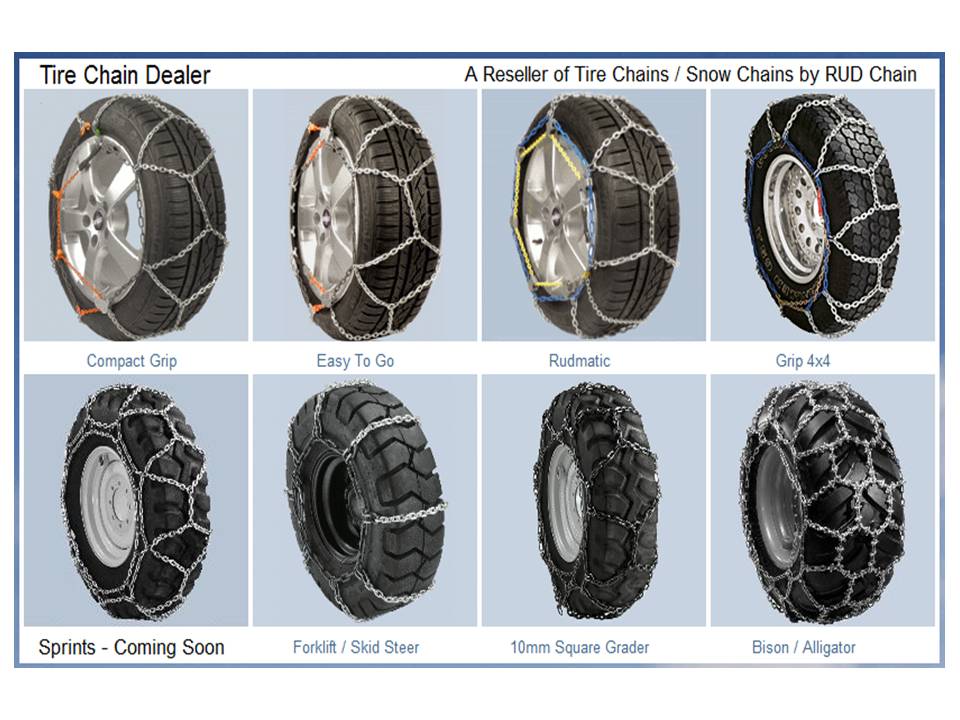 3 mm 3 mm | 45 pcs. |
| 462, 4200, 4600, 4900, 5200 | 33 cm / 13 in. | 0.325” | 1.3 mm | 56 pcs. |
| 350, 351, 352, 371, 401, 421, 422, Formula 60, 842, 1535 (1535 - 50 links) | 35 cm / 14" | 3/8” | 1.3 mm | 52 pcs. |
| 462, 4200, 4600, 4900, 5200 | 38 cm / 15" | 0.325” | 1.3 mm | 64 pcs. |
| 350, 351, 352, 371, 401, 421, 422, Formula 60, 842, 1640, ES2200, 2116(1640, ES2200, 2116 - 54 links) | 40 cm / 16" | 3/8” | 1.3 mm | 56 pcs. |
| 462, 4200, 4600, 4900, 5200 | 45 cm / 18" | 0.325” | 1.3 mm | 72 pcs. |
| 350, 351, 352, 371, 401, 421, 422, Formula 60, 842 | 45 cm / 18" | 3/8” | 1.3 mm | 62 pcs. |
| 462, 4200, 4600, 4900, 5200 | 33 cm / 13 in. | 0.325” | 1.5 mm | 56 pcs. |
| 462, 4200, 4600, 4900, 5200 | 38 cm / 15" | 0.325” | 1.5 mm | 64 pcs. |
| 462, 4200, 4600, 4900, 5200 | 45 cm / 18" | 0.325” | 1.5 mm | 72 pcs. |
| CHAIN AND BAR SIZE CHART FOR | CHAINSAW||||
| STIHL | ||||
| Chainsaw model | Bar length | Chain pitch | Bar groove | Number of links |
| MS180, MS181, MS192(T), MSE140, HT75, HT101, HT131, HT-KM | 30 cm / 12" | 3/8” | 1.1 mm | 44 pcs. |
| MS180, MS181, MS192(T), MSE140 | 35 cm / 14" | 3/8” | 1.1 mm | 50 pcs. |
| MS180, MS181, MS192(T), MS200(T), MS210, MS211, MS230, MS250, MSE160, MSE180 | 25 cm / 10" | 1/4” | 1.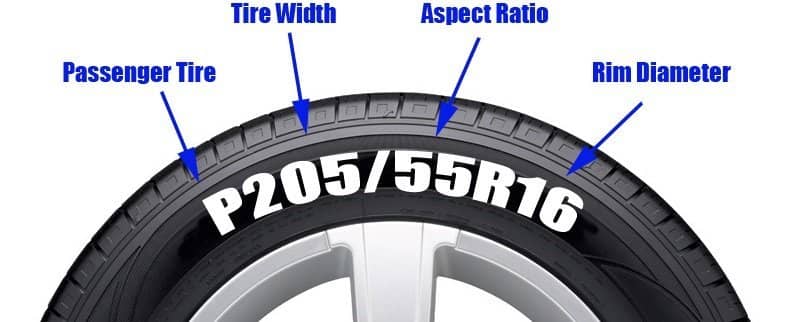 3 mm 3 mm | 56 pcs. |
| MS180, MS181, MS192(T), MS200(T), MS210, MS211, MS230, MS250, MSE140, MSE160, MSE180 | 30 cm / 12" | 1/4” | 1.3 mm | 64 pcs. |
| MS180, MS181, MS192(T), MS200(T), MS210, MS211, MS230, MS250, MSE140, MSE160, MSE180 | 30 cm / 12" | 3/8” | 1.3 mm | 44 pcs. |
| MS240, MS260, MS261 | 32 cm / 13" | 3/8” | 1.3 mm | 50 pcs. |
| MS200, MS210, MS211, MS230, MS250 | 35 cm / 14" | 1/4” | 1.3 mm | 72 pcs. |
| MS180, MS181, MS192(T), MS200(T), MS210, MS211, MS230, MS250, MSE140, MSE160, MSE180 | 35 cm / 14" | 3/8” | 1.3 mm | 50 pcs. |
| MS180, MS181, MS192(T), MS200(T), MS210, MS211, MS230, MS250, MSE140, MSE160, MSE180 | 40 cm / 16" | 3/8” | 1.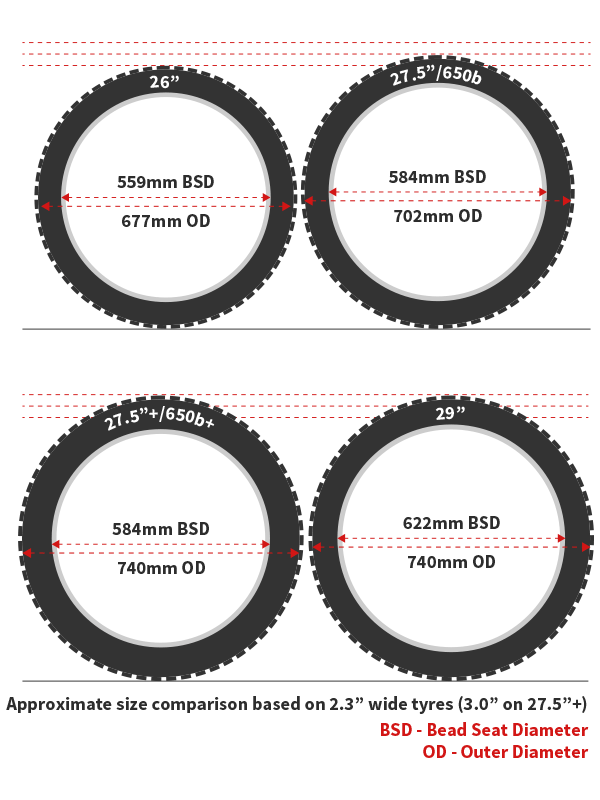 3 mm 3 mm | 55 pcs. |
| MS240, MS260, MS261 | 40 cm / 16" | 3/8” | 1.3 mm | 60 pcs. |
| MS210, MS211, MS230, MS250, MSE140, MSE160, MSE180, MS200(T), MSE140, MSE160, MSE180 ( MS200(T), MSE140, MSE160, MSE180 - 61 links) | 45 cm / 18" | 3/8” | 1.3 mm | 62 pcs. |
| MS240, MS260, MS261 | 45 cm / 18" | 3/8” | 1.3 mm | 66 pcs. |
| MS240, MS260, MS261, MS270, MS280, MS290, MS390 | 32 cm / 13" | 0.325” | 1.5 mm | 56 pcs. |
| MS210, MS211, MS230, MS250 | 35 cm / 14" | 0.325” | 1.5 mm | 56 pcs. |
| MS240, MS260, MS261, MS270, MS280, MS290, MS390, MS341, MS361, MS362 | 37 cm / 15" | 0.325” | 1.5 mm | 62 pcs. |
| MS240, MS260, MS261, MS270, MS280, MS290, MS390 | 32 cm / 13" | 0.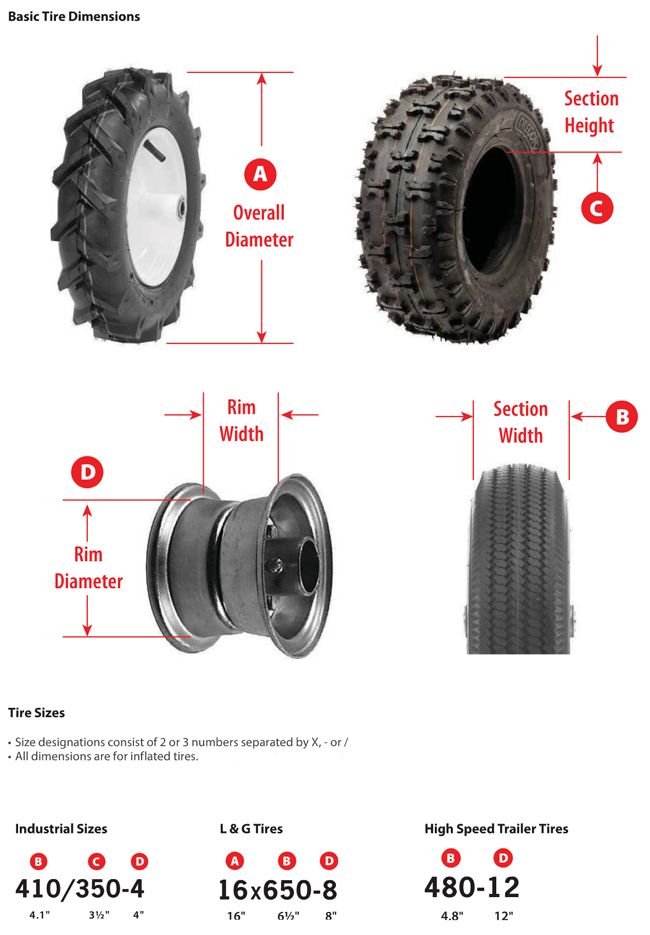 325” 325” | 1.6 mm | 56 pcs. |
| MS240, MS260, MS261, MS270, MS280, MS290, MS390, MS341, MS361, MS362 | 32 cm / 13" | 3/8” | 1.6 mm | 50 pcs. |
| MS210, MS211, MS230, MS250 | 35 cm / 14" | 0.325” | 1.6 mm | 56 pcs. |
| MS240, MS260, MS261, MS270, MS280, MS290, MS390, MS341, MS361, MS362, MS440, MS441, MS460, MSE220 ( MS440, MS441, MS460 - 64 links, MSE220 - 6050) | 37 cm / 15" | 0.325” | 1.6 mm | 62 pcs. |
| MS240, MS260, MS261, MS270, MS280, MS290, MS390, MS341, MS361, MS362, MS440, MS441, MS460, MSE220 (MSE220-57 links) | 67 pcs. | |||
| MS240, MS260, MS261, MS270, MS280, MS290, MS390, MS341, MS361, MS362, MS440, MS441,MS460, MS650, MS660, MSE220 | 40 cm / 16" | 3/8” | 1.6 mm | 60 pcs. |
| MS650, MS660 | 40 cm / 16" | 0. 404” 404” | 1.6 mm | 55 pcs. |
| MS250 | 45 cm / 18" | 0.325” | 1.6 mm | 68 pcs. |
| MS240, MS260, MS261, MS270, MS280, MS290, MS390, MSE220, MS341, MS361,MS362, MS440, MS441, MS460 (MS341, MS361,MS392, MS440, MS441,MS450-750 links) | 45 cm / 18" | 0.325” | 1.6 mm | 74 pcs. |
| MS240, MS260, MS261, MS270, MS280, MS290, MS390, MS341, MS361, MS362, MS440, MS441,MS460, MS650, MS660, MSE220 | 45 cm / 18" | 3/8” | 1.6 mm | 66 pcs. |
| MS650, MS660 | 45 cm / 18" | 0.404” | 1.6 mm | 60 pcs. |
| MS341, MS361, MS362, MS440, MS441, MS460, MS290, MS390, MSE220 ( MS290, MS390, MSE220 - 81 links) | 50 cm / 20" | 0.325” | 1.6 mm | 82 pcs. |
| MS290, MS390, MS341, MS360, MS361, MS362, MS440, MS441,MS460, MS460R, MS650, MS660, MSE220 | 50 cm / 20 inches | 3/8” | 1.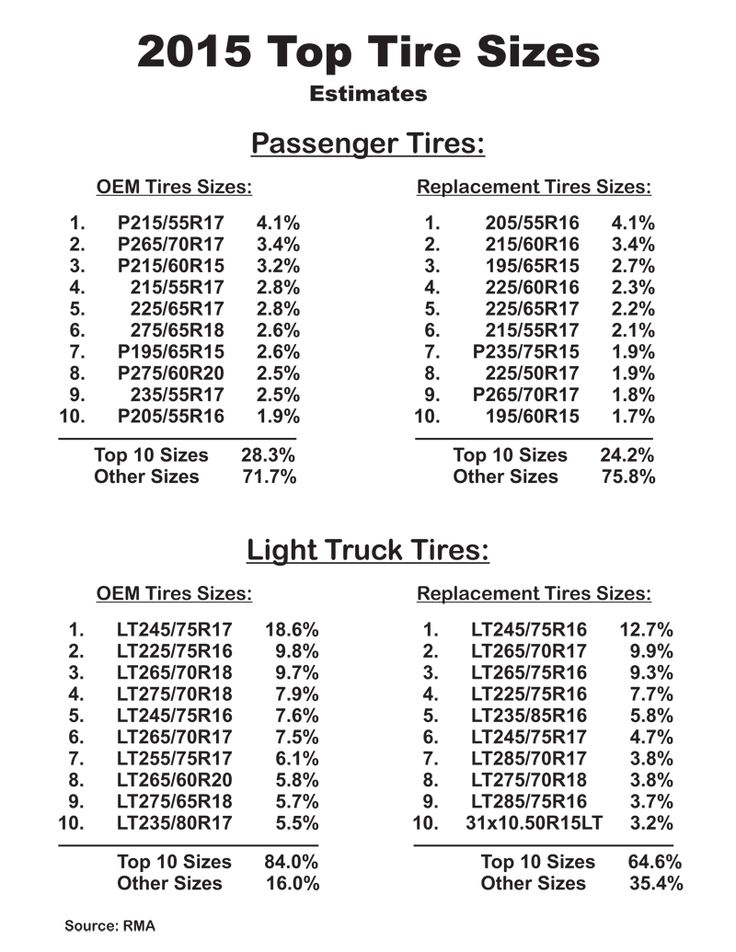 6 mm 6 mm | 72 pcs. |
| MS650, MS660 | 50 cm / 20" | 0.404” | 1.6 mm | 66 pcs. |
| MS290, MS390, MS440, MS441, MS460, MS650, MS660, MS780, MS880 | 63 cm / 25" | 3/8” | 1.6 mm | 84 pcs. |
| MS440, MS441, MS460, MS650, MS660 | 75 cm / 30" | 3/8” | 1.6 mm | 98 pcs. |
| MS780, MS880 | 150 cm / 60 inches | 0.404” | 1.6 mm | 173 pcs. |
| CHAIN AND BAR SIZE CHART FOR | CHAINSAW||||
| CHAMPION | ||||
| Chainsaw model | Bar length | Chain pitch | Bar groove | Number of links |
| 116, 138, 216, 220N, 242, 320N, 335, 420 | 40 cm / 16" | 3/8” | 1.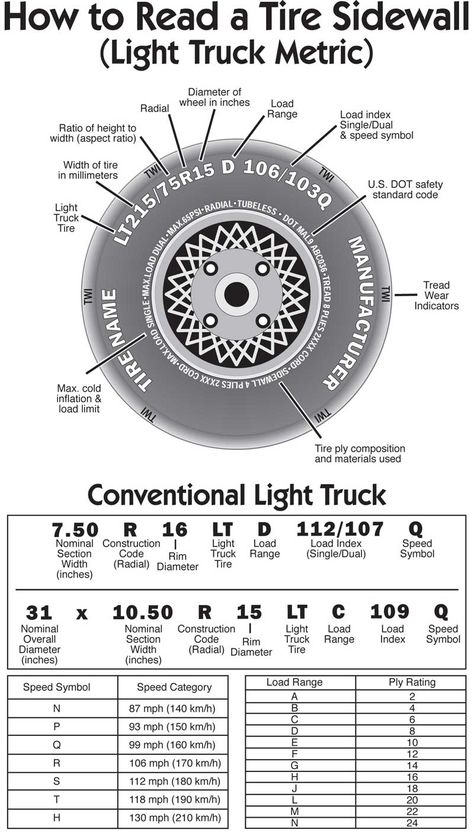 3 mm 3 mm | 56 pcs. |
| 138, 242, 255, 341, 345 | 45 cm / 18" | 3/8” | 1.3 mm | 61 pcs. |
| CHAIN AND BAR SIZE CHART FOR | CHAINSAW||||
| HITACHI | ||||
| Chainsaw model | Bar length | Chain pitch | Bar groove | Number of links |
| CS 350A, CS35EG(S), CS35EH(S), CS35EJ | 35 cm / 14" | 3/8” | 1.3 mm | 52 pcs. |
| CS38EB, CS38EK, CS38EL | 38 cm / 15" | 0.325” | 1.3 mm | 64 pcs. |
| CS40EK, CS40EL | 40 cm / 16" | 0.325” | 1.3 mm | 66 pcs. |
| CS45EK, CS45EL | 45 cm / 18" | 0.325” | 1.3 mm | 72 pcs. |
| CS40EM | 40 cm / 16" | 0. 325” 325” | 1.5 mm | 66 pcs. |
| CS45EM | 45 cm / 18" | 0.325” | 1.5 mm | 72 pcs. |
| CHAIN AND BAR SIZE CHART FOR | CHAINSAW||||
| EFCO | ||||
| Chainsaw model | Bar length | Chain pitch | Bar groove | Number of links |
| 125, MT2600 | 25 cm / 10" | 1/4” | 1.3 mm | 60 pcs. |
| 132S, 15E | 30 cm / 12" | 3/8” | 1.3 mm | 44 pcs. |
| 132S, 17E | 35 cm / 14" | 3/8” | 1.3 mm | 50 pcs. |
| 140S, 141S | 40 cm / 16" | 3/8” | 1.3 mm | 56 pcs. |
| 136, 137, 140, 19E, EF2000E | 40 cm / 16" | 3/8” | 1.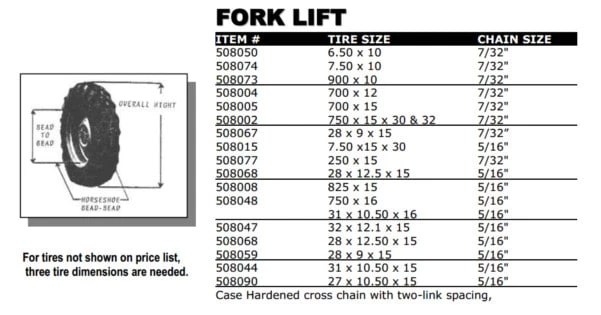 3 mm 3 mm | 57 pcs. |
| 146, 147, 151, 152, 156, 162 | 40 cm / 16" | 0.325” | 1.5 mm | 66 pcs. |
| 146, 147, 151, 152, 156, 162, 171, 181 | 45 cm / 18" | 0.325” | 1.5 mm | 72 pcs. |
| 165HD | 45 cm / 18" | 3/8” | 1.5 mm | 68 pcs. |
| CHAIN AND BAR SIZE CHART FOR CHAINSAW | ||||
| MCCULLOCH | ||||
| Chainsaw model | Bar length | Chain pitch | Bar groove | Number of links |
| MacCat438 | 30 cm / 12" | 3/8” | 1.3 mm | 45 pcs. |
| MacCat438 | 35 cm / 14" | 3/8” | 1.3 mm | 50 pcs. |
| InLine 1650, InLine 1800T, Mac 738, Elektramac235, E ProMac 1900 | 35 cm / 14" | 3/8” | 1.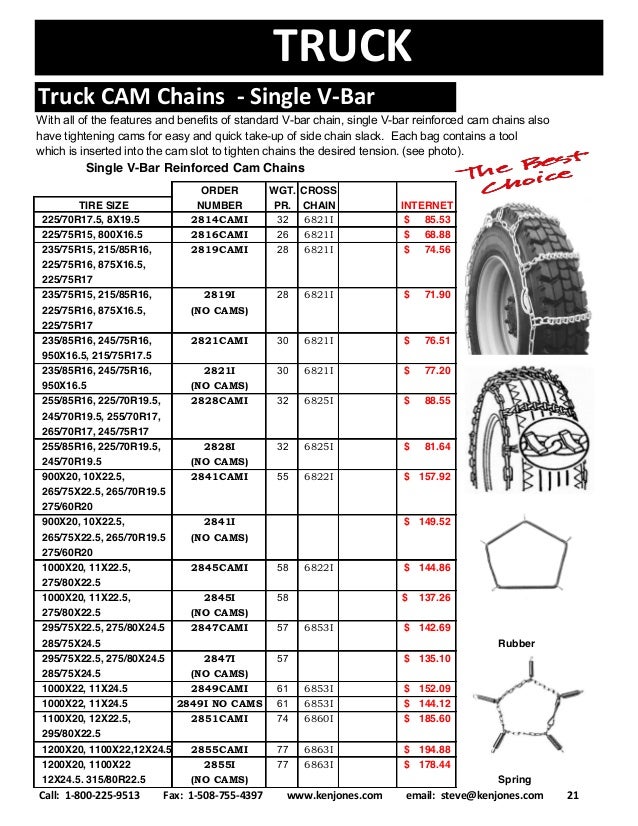 3 mm 3 mm | 52 pcs. |
| MacCat438 | 40 cm / 16" | 3/8” | 1.3 mm | 55 pcs. |
| Mac325, Mac335, MacCat438, MacCat440, MacCat441, Mac740, Mac842, Elektramac316, Elektramac340 | 40 cm / 16" | 3/8” | 1.3 mm | 56 pcs. |
| MacCat438 | 45 cm / 18" | 3/8” | 1.3 mm | 60 pcs. |
| CHAIN AND BAR SIZE CHART FOR | CHAINSAW||||
| ECHO | ||||
| Chainsaw model | Bar length | Chain pitch | Bar groove | Number of links |
| CS-2600(ES), CS-260T(TES), CS-2700(ES), CS-270WES | 25 cm / 10" | 3/8” | 1.3 mm | 40 pcs. |
| CS-2700(ES), CS-270WES, CS-3500, CS-350WES | 30 cm / 12" | 3/8” | 1. 3 mm 3 mm | 47 pcs. |
| CS-3050, CS-3500, CS-350WES, CS-370ES | 35 cm / 14" | 3/8” | 1.3 mm | 53 pcs. |
| , CS-3700ES, CS-4200ES | 40 cm / 16" | 0.325” | 1.3 mm | 66 pcs. |
| CS-3500, CS-350WES, CS-370ES | 40 cm / 16" | 3/8” | 1.3 mm | 58 pcs. |
| CS-3700ES, CS-370ES, CS-4200ES | 33 cm / 13 in. | 0.325” | 1.5 mm | 56 pcs. |
| CS-3700ES, CS-370ES, CS-4200ES, CS-420ES, CS-450, CS-5100 | 38 cm / 15" | 0.325” | 1.5 mm | 64 pcs. |
| CS-4200ES, CS-420ES | 43 cm / 17" | 0.325” | 1.5 mm | 72 pcs. |
| CS-450, CS-5100 | 45 cm / 18" | 0.325” | 1.5 mm | 72 pcs. |
| CS-600, CS-680, CS-8002 | 45 cm / 18" | 3/8” | 1. | |